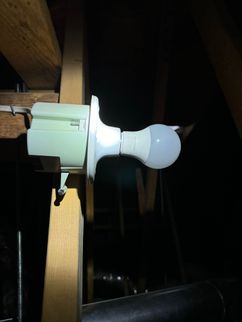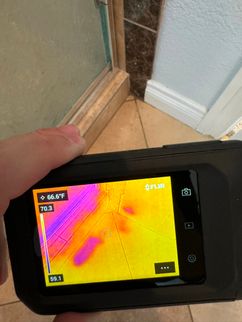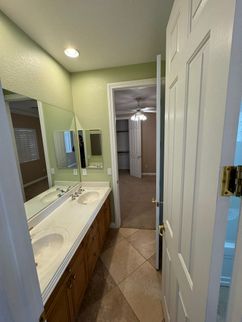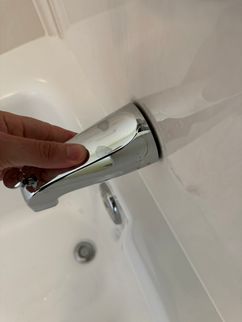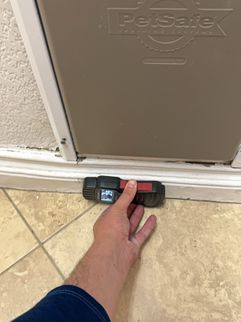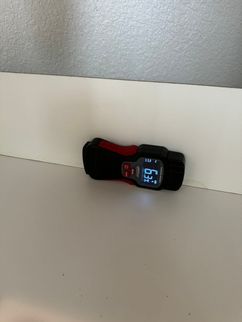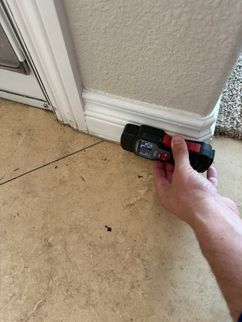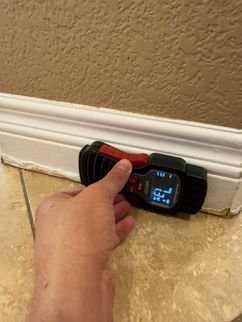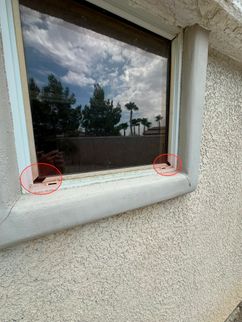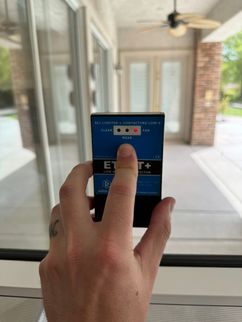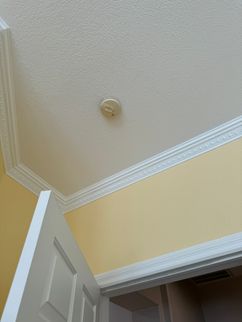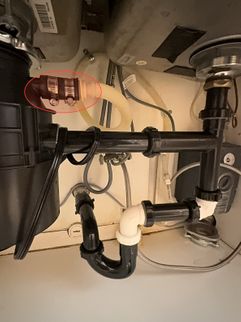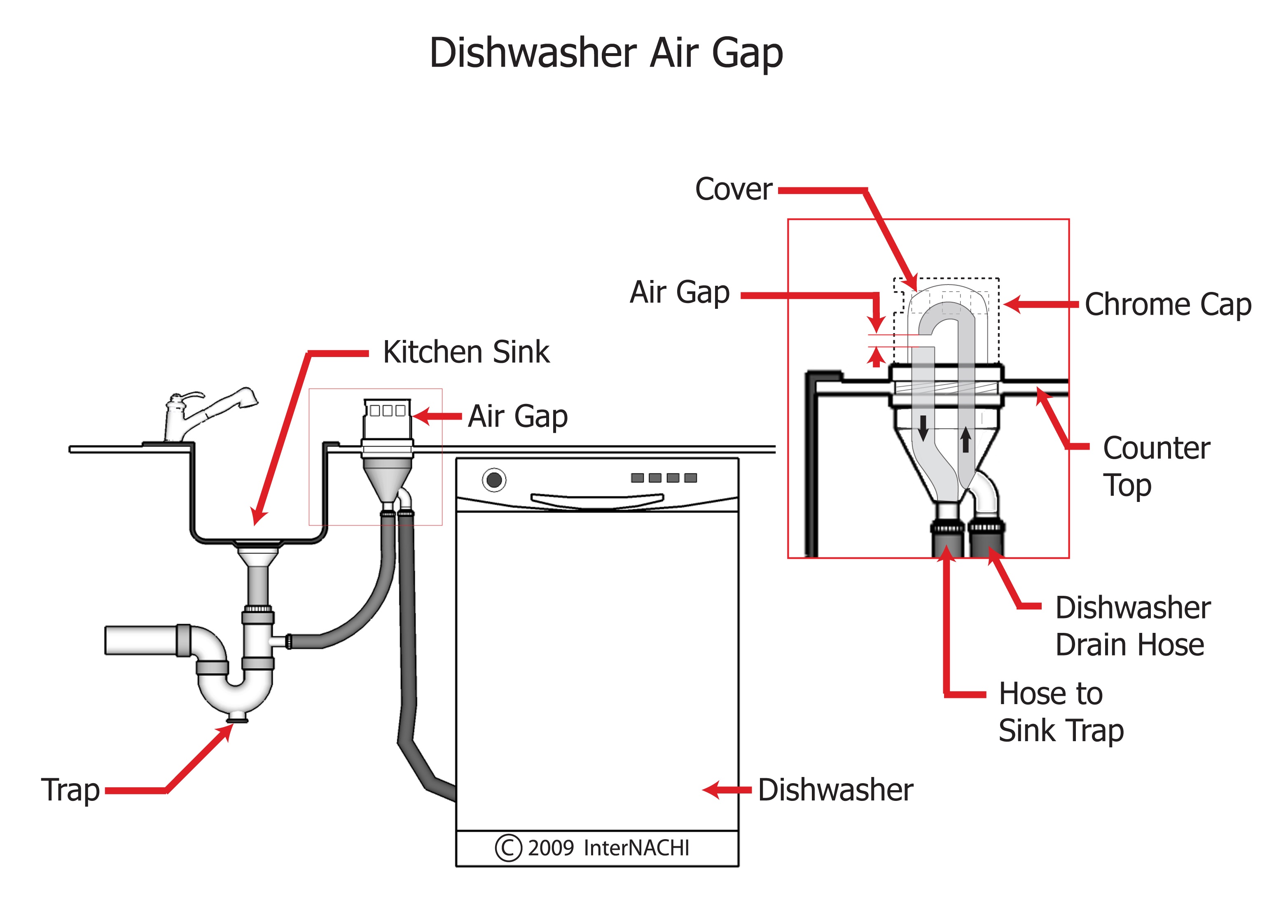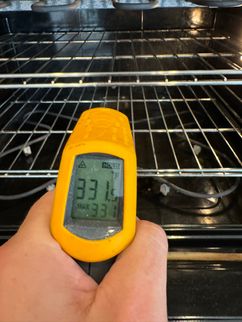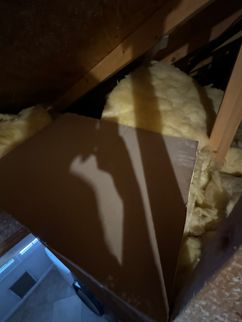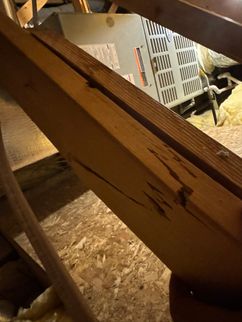The Scope and Purpose of a Home Inspection
Standards of Practice
INSPECT LV performs all home inspections in conformity with NAC 645D.
Purchasing Property Involves Risk
The purpose of a home inspection is to help reduce the risk associated with the purchase of a structure by providing a professional opinion about the overall condition of the structure. A home inspection is a limited visual inspection, and it cannot eliminate this risk. Some homes present greater risk than others, which we cannot control.
This report does not endeavor to document superficial imperfections recognizable to a layperson, nor does it serve as an exhaustive list of items necessitating repair or routine upkeep. The purpose of this report is to identify "Material Defects". The International Association of Certified Home Inspectors (InterNACHI) defines Material Defect as a "specific issue with a system or component of a residential property that may have a significant, adverse impact on the value of the property, or that poses an unreasonable risk to people”. This report contains many Property deficiencies as well as some informational aspects and positive attributes that were observed by the inspector. However, the report will not encompass every existing or potential deficiency. This report only represents the condition of the visually inspected areas of the Property while the Inspector was on site. The photographs depicted in this report are only representative photographs and may not represent the totality of all conditions. Property conditions may change between the conclusion of this inspection and the title transfer date. A thorough final walk-through prior to title transfer helps protect against unexpected surprises and is highly recommended. Please download a complimentary copy of our Final Walkthrough Checklist.
A Home Inspection is Visual and Non-destructive
The descriptions and observations in this report are based on a visual inspection of the structure. We inspect the aspects of the structure that can be viewed without dismantling, damaging, or disfiguring the structure and without moving furniture and interior furnishings. Areas that are concealed, hidden, or inaccessible to view are not covered by this inspection. Some systems cannot be tested during this inspection as testing risks damaging the building. For example, overflow drains on bathtubs are generally not tested because the seals are often compromised, and if leaking, they could damage components and finishes below. Our procedures involve non-invasive investigation and non-destructive testing, which will limit the scope of the inspection. Our inspection service strictly abides the limitations defined by NAC645D.470, emphasizing non-invasive, non-destructive visual assessment. Certain components may have latent defects not immediately visible during the inspection.
This is Not a Code Compliance Inspection
This inspection and report are not intended for city/county code compliance. During the construction process, structures are inspected for code compliance by municipal inspectors. Framing is open at this time, and conditions can be fully viewed. However, during inspections of finished homes, Framing is not open and conditions cannot be fully viewed. All houses fall out of code compliance shortly after they are built, as the codes continually change. National building standards and practices are augmented at least every three years for all disciplines. Municipalities can adopt and phase in sections of the codes on their timetables. There are generally no requirements to bring older homes into compliance unless substantial renovation is being done. You are encouraged to ensure that all relevant installations were accomplished by a licensed and skilled contractor, leveraging the advantages of the permit process, and adhering to manufacturer's installation guidelines.
This is Just Our Opinion
Construction techniques and standards vary. The observations in this report are the opinions of a licensed Nevada Inspector of Structures. Other inspectors and contractors are likely to have some differing opinions. You are welcome to seek opinions from other professionals. The overall goal of a home inspection is to help ensure that your expectations are appropriate for the house you are proposing to buy. To this end, we assist with the discovery by showing and documenting observations during the home inspection. This should not be mistaken for a technically exhaustive inspection designed to uncover every defect in a building. Such inspections are available, but they are generally cost-prohibitive to most homebuyers.
This report does not substitute for or serve as a warranty or guarantee of any kind. Home warranties can be purchased separately from insuring firms that provide this service. The purchase of a home warranty, where applicable, is also recommended. It is important to research the home warranty companies available to ensure adequate coverage will be provided and available when needed. INSPECT LV does not provide contractor referrals to address items noted in this report. Were we to do that, the perception exists of impropriety. INSPECT LV views the perception of impropriety to be an impropriety. If this inspection was performed in conjunction with a sale of the Property, it is recommended the Client seek specific recommendations from their Agent. It is always advised the Client uses a licensed and qualified contractor to further review or repair any items noted in this report. Whether deemed necessary or not, all contractor recommendations should be abided during your due diligence / contingency period. Always verify the licensing status of any contractor with the Nevada State Contractors Board by calling (702) 486-1100 or visiting their website.
INSPECT LV is a privately held Nevada Corporation, a member of the Southern Nevada Association of Professional Property Inspectors (SNAPPI), Better Business Bureau of Southern Nevada (BBB), International Association of Certified Home Inspectors (NACHI), and Las Vegas REALTORS (LVR).
__________________________________________________________________________________________________________________________________________________________________________________________________
How to Read This Report
Getting the Information to You
This report is designed to deliver important and technical information in a way that is easy for anyone to access and understand. If you are in a hurry, you can take a quick look at our "Summary Page” and quickly get the critical information for important decision-making. However, we strongly recommend that you take the time to read the full Report, which includes digital photographs, captions, diagrams, descriptions, videos, and hot links to additional information.
The best way to get the layers of information presented in this report is to read your report online, which will allow you to expand your learning about your house. You will notice some words or series of words highlighted in blue and underlined – clicking on these will provide you with additional information.
This report can also be printed to a PDF file and printed on paper as desired.
Chapters and Sections
This report is divided into chapters that parcel the home into logical inspection components. Each chapter is broken into sections that relate to a specific system or component of the home. You can navigate between chapters with the click of a button on the left-side margin.
Most sections will contain some descriptive information in black font. Observation narrative, done in colored boxes, will be included if a system or component is found to be significantly deficient in some way or if we wish to provide helpful additional information about the system or the scope of our inspection. If a system or component of the home was deemed to be in satisfactory or serviceable condition, there might be no narrative observation comments in that section, and it may simply say “tested” or “inspected.”
Observation Labels
All narrative observations are colored, numbered, and labeled to help you find, refer to, and understand the severity of the observation. Observation colors and labels used in this report are:
- Material Defect:Specific issue with a system or component that may have a significant, adverse impact on the value of the property, or that poses an unreasonable risk to people- Enlisting the services of a licensed and qualified contractor is necessary.
- Repair:Conditions that appeared to deviate from their original design and/or function- Enlisting the services of a licensed and qualified contractor would be the most suitable course of action.
- Maintenance:Deferred maintenance concerns, requiring suitable action to restore the components to optimal condition.
- Monitor:Regularly observe this discovery. If or when needed, enlist a qualified and licensed contractor.
- Efficiency:Repair, modification or replacement typically enhances component or system efficiency and may reduce utility costs- Enlisting the services of a licensed and qualified contractor would be the most suitable course of action.
- Upgrade:Improvement can enhance aesthetics, safety, or efficiency; often reflecting changes to building standards and practices.
- Due Diligence:Significance of the discovery remains uncertain, suggesting further investigation is warranted so that buyers can better understand recent servicing, repairs or maintenance, or even construction history and building/site design.
- Informational:Provided for informational purposes or to benchmark the property condition during the inspection.
- Positive:Favorable property characteristic.
- Limitations:Conditions present at the time of inspection which limited the scope of this visual inspection.
- 📃:Supplementary disclosures
Summary Page
The Summary Page is designed as a bulleted overview of all the observations noted during the inspection. This helpful overview is not a substitute for reading the entire inspection report. The entire report must be read to get a complete understanding of this inspection report, as the Summary Page does not include photographs or photo captions.
The Uniform Building Inspection Report
🌵 Grounds
Water Meter
Irrigation
Site Elements, Grading, Drainage
Retaining Walls
Fences and Gates
Grounds, Trees and Vegetation
Grounds / Parking Lighting
Driveways/Walkways/Flatwork
Outbuildings, Trellises, Storage Sheds, Barns
🔥❄️ Heating, Cooling, Fireplaces and Ventilation
Heating System 1 (West)
Heating System 2 (East)
Heating System 3 (Detached Garage)
Vents and Flues
Air Filters
A/C 1 (West)
A/C 2 (East)
A/C 3 (Detached Garage)
Heating and Cooling Distribution Systems
Mechanical Ventilation Systems
Non-solid Fuel Fireplaces (LR)
Non-solid Fuel Fireplaces (Main bed)
🛟 Pools and Spas
General Pool Photos
Pool / Spa
Heating Equipment
Filters, Skimmers, Drains, & Cleaning Systems
Pump Equipment, Plumbing & Electrical Systems
Decks, Steps, & Coping
Safety Devices
🪠 Plumbing
Exterior Hose Bibs
Water Service Supply
Distribution Pipe
Waste Pipe and Discharge
Additional Sinks
⚡ Electric Service
Electric Service
Electrical Bonding System
Electrical Grounding System
Main Electric Panel
Sub Electrical Panel (Garage)
Sub Electrical Panel (Pool)
Sub Electrical Panel (Detached Garage)
Appliance Disconnects
🔌 Electric Distribution and Finish
Branch Wiring
Switches, Receptacles and Fixtures
Ceiling Fans
Low Voltage Wiring
🛁 Hall Bathroom
General Bathroom Photos
Sinks and Cabinets
Water Closet
Bathtub / Shower
Bathroom Ventilation
General Bath
🛁 Main Bathroom
General Bathroom Photos
Sinks and Cabinets
Water Closet
Bathtub / Shower
Bathroom Ventilation
General Bath
🚽Detached Garage Bath
General Bathroom Photos
Sinks and Cabinets
Water Closet
Bathroom Ventilation
General Bath
🛁Pass-through Bathroom
General Bathroom Photos
Sinks and Cabinets
Water Closet
Bathtub / Shower
Bathroom Ventilation
General Bath
🛋️ Interior
Walls, Ceilings, Trim, Hallways and Closets
Interior Doors
Windows
Smoke and Carbon Monoxide Alarm Systems
Floors and Floor Materials
Misc. Systems
🏗️ General Comments
Building Characteristics, Conditions and Limitations
Approximate Year of Original Construction: 2001
Building Type: Single family (1-story)
Approximate Square Footage: 3285
Attendance (%): Inspector(s), Listing agent (100%), Buying agent (20%), Buyer(s) (At Conclusion)
Occupancy: Unoccupied
Unoccupied
This property was unoccupied at the time of inspection, presenting unique challenges. Many systems such as HVAC, Electrical, and Plumbing may not have been in regular use before the inspection. While we can test these systems during inspection, this singular test differs from regular usage, making it difficult to predict how they will perform afterwards. For instance, shower pans might only reveal leaks when in use, and root-invaded sewer lines may allow water flow initially but fail under heavier loads, such as flushing waste and tissue. Identifying past or existing issues during our relatively short inspection period is our priority, but please be aware of the limitations inherent in this process.
PERSONAL PROPERTY NOTE
The client is reminded that this is a "Real Property" inspection. Real property components are those fixtures or appurtenances physically attached to the property that cannot be removed without causing significant disturbance or damage. Personal property components are not included in the scope of this inspection. Several specific examples are cited in our Agreement such as washer, dryer and refrigerator.
Animals Present: No
Weather Conditions: Hot, Clear, Dry
Approximate Temperature: 105° F
Ground/Soil surface conditions: Damp
Front Door Faces: Northerly
Northerly
Sub Area: No
No
Outbuilding(s): Yes
Yes
Pool/Spa: Yes
Yes
Utilities Present: Electric
Electric Water
Water Natural Gas (NG)
Natural Gas (NG)
Renovations: Original/mostly original
Original/mostly original
New Construction: No
No
RESALE HOME
Please be advised this report does not endeavor to document superficial imperfections recognizable to a layperson, nor does it serve as an exhaustive list of items necessitating repair or routine upkeep. These examples are for illustrative purposes only and may not depict all existing conditions.
🌦️ Roof and Chimney
Roof Materials
Roof Inspection Method: Viewed with drone
The client is advised the inspector did not traverse the roof. Any time there is foot traffic on the roof the potential for damaged exists. Robotic drones significantly increase the viewable area and the potential for damage is negated. The level of detail is increased significantly and the potential for damage is negated. Only the pertinent photographs are included in this report.
Roof Penetrations: Roof fully reviewed
Roof fully reviewed
Roof fully viewed from roof level, which allowed full view of the roof and all roof penetrations whether traversed or not.
Roof Style: Hip, Valley, Gable
Approximate Roof Pitch: 4/12 to 6/12
Roof Covering Materials: Concrete tile (Cracked, Chipped)
Concrete tiles can last 50 years or more. However, the roof is not maintenance free. Repairing slipped or damaged or tiles is a recurring preventive maintenance issue. Roof underlayment typically lasts from 10 to 25 years depending on the materials, weather, and other conditions. Roofs should be inspected annually and after major weather events.
Roof Flashings and Valleys: Present and Visually Standard, Mineral flashing, Metal flashing
Roof flashings are used to keep a roofing system waterproof where the roofing material starts, stops, changes direction, or is penetrated. During the inspection, we look for standard flashing techniques that could be considered normal or standard in our region. Damaged, incomplete or non-standard flashings can be a sign of an older or less reliable roofing system and may require repair. Any apparent non-standard flashings noted during the inspection will be reported below, if observed.
CRACKED CONCRETE TILES
On a typical inspection of a typical Las Vegas home our inspection firm generally identifies three to five cracked roof tiles on a 2000 square foot home. Cracked roof tiles are typical because wind causes the tiles to shudder, crack, and chip. Contrary to popular belief concrete roof tiles do very little to provide water tight integrity to the roof. The water tight integrity is provided by the oil impregnated tar paper located beneath the tiles (known as "felt" in the building industry). The concrete tiles act as an insulator and protect the felt from direct exposure to the sun to prevent the felt from drying out.
ROOF TILES CHIPPED
One or more tiles were noted to be chipped. Causes for chipped roof tiles include but are not limited to foot traffic, an impact, or even installation. As a general rule, tiles with a chip that meets or exceeds 3 inches should be replaced as the chipped area may exceed the minimum head lap of the tile beneath it. This could expose the underlayment to sunlight, which will compromise it prematurely.
CLEAN ORGANIC DEBRIS FROM ROOF
Clean organic debris from the roof to ensure unrestricted paths for roof drainage. This discovery is conducive to damming water, which increases the likelihood of moisture intrusion issues. This is routine maintenance that should be part of a regular maintenance schedule. Because accessing a roof is inherently dangerous, this maintenance action should be performed by a licensed and qualified Roofing Contractor.
Eaves, Soffits, and Fascia
📝: Covered soffit
Staining: No
Chimneys
✏️: Present, Not reviewed
Chimney Interior Review Method: Partially reviewed from the roof
Chimney Material: Metal
Metal chimneys are constructed from materials such as stainless steel or galvanized steel, known for their durability and resistance to weathering. They provide efficient venting for fireplaces, stoves, or heating appliances, offering a sleek and modern appearance compared to traditional masonry chimneys. Regular maintenance is essential to ensure proper function and prevent issues like corrosion or blockages. Below are examples of proper installations:
CHIMNEY CLEANING AND INSPECTION IS RECOMMENDED
The NFPA (National Fire Protection Association) recommends an annual inspection of all chimneys, fireplaces, solid fuel-burning appliances, and vents. They also recommend an NFPA 211 Standard, Level II inspection upon sale or transfer of the property. A Level II inspection includes, not only cleaning the interior of the chimney pipe, but also the use of specialized tools and testing procedures such as video cameras, etc. to thoroughly evaluate the serviceability of the entire flue lining and fireplace/chimney system. Level II inspections are not always needed, especially for short simple flues that can be inspected visually after a cleaning. If a chimney cleaning has not been performed over the past 12 months, such an inspection is recommended before the home changes ownership---for fire safety reasons. Implement any repairs as recommended.
☔ Gutters and Roof Drains
Gutters and Roof Drains
Materials: Metal
Types: Gutters
GUTTER AND DOWNSPOUT REPAIRS
The gutters and downspouts require repairs to ensure reliable performance. Gutter and downspout systems are critical for controlling roof runoff and preventing water from damaging the building. Regular gutter care is needed to keep this system working reliably, especially keeping gutters clean, well-secured, and draining away from the structure. Implement gutter and downspout repairs as needed. Examples of specific observations noted during the inspection include:
🛠
- Gutters are clogged with organic debris
- Downspouts are draining next to the foundation - extend terminations away from the foundation as far as feasible.
🌵 Grounds
Water Meter
🕐: No Movement
WATER METER REVIEWED WITH NO MOVEMENT OBSERVED
This shows the location of the water meter at the street side of the house. The client is advised that one of the first actions taken by the inspector is to review the flow indicator on the water meter for movement. No movement was noted on the flow indicator.
Irrigation
 Not inspected
Not inspected
Pressure Vacuum Breaker (PVB): Present (Leak evidence/corrosion)
PRESSURE VACUUM BREAKER (PVB) NOTE
These are mechanical devices designed to prevent backflow, capable of functioning under continuous pressure. They consist of two spring-loaded valves: one functions as a check valve and the other as an air inlet valve. Typically situated on the grounds near pool equipment or on the exterior of buildings, PVBs ensure water flows in one direction to safeguard water quality.
IRRIGATION PVB LEAK EVIDENCE
Stains, mineral deposits and corrosion were present. However, no active leak was observed. If a leak is occurring, this condition may change the soil compaction in the area and cause damage to surrounding components.
- The irrigation likely just ran because the ground is damp in many areas.
IRRIGATION SYSTEM OBSERVED
The property had one or more irrigation systems, which fall outside the scope of our inspection services. Based on my experience, these systems often need regular maintenance, repairs, and servicing. Inquire with the seller for any relevant details about the irrigation system. Proper maintenance is essential to ensure that the system doesn’t affect the structure and to extend the lifespan of the siding.
Site Elements, Grading, Drainage
 Above grade (with respect to road)
Above grade (with respect to road)
 Low slope
Low slope
Soil: Clay (expansive)
Clay (expansive)
CLAY SOIL NOTE
Clay is a predominant soil type in the Las Vegas Valley, alongside sand and caliche, known for its hardness and poor nutrient content. It often exhibits high pH levels or alkalinity. Clay-rich soils undergo shrink-swell cycles due to moisture changes, leading to potential heaving and lifting of structures from swelling pressures, as well as settlement or subsidence from shrinkage, which can vary across different areas.
Planters: Enclosed plant area next to foundation
Enclosed plant area next to foundation
DRAINAGE QUESTIONABLE
Drainage appears to be lacking / obstructed on this property; expect ponding water at one or more locations. There may be underground drain provisions which were not visible to me. One example of ponding water that I saw was on the West side of the property:
Retaining Walls
 Part of Fence System
Part of Fence System
Retaining Wall Material: Block
MASONRY FENCE / WALL NOTE
Water-soluble salts may be deposited on stucco, masonry fences or concrete materials as efflorescence. Practically any building materials in direct contact with the earth are potential sources for water-soluble salts. This may be due to high pH in the soil or excessive moisture due to poor drainage. The white residue can be cleaned off with white vinegar and a stiff bristle brush. Stucco coated fences and/or walls may need to be repeatedly patched.
Fences and Gates
Exterior Fencing: Present
Present Concrete Masonry Unit (CMU)
Concrete Masonry Unit (CMU)
FENCING NOTE
The property has a fencing system in place. Inspection and evaluation of fencing is beyond the scope of a home inspection. If the fencing system is important for your use of this property, I recommended a self-examination to see how it will meet your needs. I may make cursory comments about fencing as a courtesy.
MASONRY FENCE / WALL NOTE
Water-soluble salts may be deposited on stucco, masonry fences or concrete materials as efflorescence. Practically any building materials in direct contact with the earth are potential sources for water-soluble salts. This may be due to high pH in the soil or excessive moisture due to poor drainage. The white residue can be cleaned off with white vinegar and a stiff bristle brush. Stucco coated fences and/or walls may need to be repeatedly patched.
Exterior gate(s): Metal
Metal
Grounds, Trees and Vegetation
Trees/Vegetation: Yes - Prune vegetation off house
Yes - Prune vegetation off house
TREE ROOT PROBLEM POTENTIAL
Vegetation noted to be in close proximity to the foundation and/or structure. The potential for damage exists but no significant damage was noted. I advise removing any tree, plant or bush within 5 feet of the structure to limit the potential for structural damage. Please note that tree roots may invade sewer lines at any time. It is beyond the scope of our inspection service to ascertain or predict if this condition exists or ever could exist. No apparent indications of DWV system blockage was observed. The client is directed to review the SRPD (Sellers Real Property Disclosure) statement or inquire with the homeowner to gain further insight to this issue. If the client is concerned, it is advised to have a sewer scope performed by a licensed and qualified Plumbing Contractor.
PRUNE VEGETATION OFF STRUCTURE
As a general guideline, tree limbs should be kept a minimum of 6 to 8 feet away from the house to prevent damage from branches rubbing against the siding, roof, or windows during windy conditions. For larger trees, especially those with heavy branches, a greater clearance of 10 to 15 feet may be advisable to reduce the risk of limb breakage and potential damage to the house during storms. Regular pruning and maintenance by a qualified arborist can help ensure proper clearance and minimize the risk of tree-related damage to the house. Smaller vegetation, including grasses, flowers and shrubs should be kept 1-foot off the house to eliminate contact which could trap moisture against the building.
Grounds / Parking Lighting
 Timer, photocell, motion, etc.
Timer, photocell, motion, etc.
Driveways/Walkways/Flatwork
Driveway: Concrete, Pavers
Walkways: Concrete, Pavers
Patios: Concrete
Outbuildings, Trellises, Storage Sheds, Barns
 Not inspected
Not inspected Pergola
Pergola
⛽ Fuel Storage and Distribution
Gas Meter
 Present
Present
Gas Shutoff Location: West side of structure
Gas Piping
Gas Piping Material: Steel
GAS OUTLET OBSERVED
This outlet is generally an upgrade that will allow the homeowner to install a barbecue grill, a patio heater, or other gas operated appliances on the natural gas main for the home. Although propane and natural gas seem to be similar they have very different characteristics. Barbecue grills, deck heaters and other propane operated appliances must have a conversion kit installed in order to be able to use natural gas in these components. For additional information regarding converting propane appliances to natural gas please contact our natural gas utility provider, Southwest Gas Corporation toll free at (877) 860-6020. Their website can be found at http://www.swgas.com.
🏠 Exterior
Siding and Trim
Trim Material: Foam stucco
Siding Material: Stucco
This building has a hardcoat stucco siding system. When installed over a wood building, stucco should be installed with two layers of underlayment below the plaster and a weep screed system which allows air to dry any accumulated moisture behind the plaster. Stucco is one of the nicest and lowest-maintenance siding systems but it is installation-sensitive. Poor installation can lead to expensive moisture control problems. The critical weather barrier, which is installed beneath the plaster is not visible to inspection, limiting the inspectors' ability to see how the system is performing. During our visual inspection, we look for clues to help make an educated guess about the future reliability of this system. More detailed information can be gained through destructive testing. This involves drilling holes in the plaster and using a moisture probe to determine if any sections of the building have moisture control problems. Destructive testing such as this is the only way to get reliable information on how the system is performing and it is beyond the scope of this inspection. Please also note that destructive testing is also limited and should be scheduled for times of year with the most precipitation: if it has been dry for an extended period, moisture probe testing may be worthless as building materials would be dry.
Wall Flashing: Partially visible
Partially visible Hardscape
Hardscape
LOCALIZED SIDING AND TRIM REPAIRS NEEDED
Repairs are needed to the exterior siding. Examples of observations noted during the inspection include:
- Please note that whenever there is damage to the siding system, there is a risk of uncovering additional concealed damage in the course of repairs.
IMPROPER WEEP SCREED CLEARANCE
A weep screed is the metal flashing at the base of a stucco wall. Stucco is a porous product that will absorb moisture. This type of flashing has holes installed that allows moisture to drain from the wall and provides a path for air to ventilate the cavity behind the wall. A weep screed is required to be placed a minimum of 4 inches above the earth or 2 inches above paved areas and shall be of a type that will allow trapped water to drain to the exterior of the building.
Exterior Vent and Exhaust Terminations
Exterior Exhaust and Vent Terminations: Present
Exterior Doors
Exterior Door Styles: Hollow core, Solid core, Sliding glass, Glass panel doors
NFPA 101 Life Safety Code states that all ways out must be opened easily from inside. Tools, keys, or special effort should not be needed to escape.
Security Door / Gate: No
No
EXTERIOR DOOR REPAIRS NEEDED
Repairs are needed to the exterior doors. Conditions noted during inspection indicate a risk of concealed water damage around the door. Examples of observations noted during the inspection include:
- Staining and and water intrusion evidence was noted, which is likely the result of heavy roof runoff during inclement weather splashing off the ground and bypassing the weatherstrip and door sweep. Installation of a gutter or diverter flashing above the affected doors would be prudent to help prevent future occurrences.
- The living room slider has a dog door insert installed that does not allow the door to properly seal. Security is also questionable with the installed insert.
- Patio door lockset height questionable and impede egress. To my knowledge, door handles, pulls, latches, locks, and other operating devices must be installed at a height of no less than 34 inches (864 mm) and no more than 48 inches (1219 mm) above the finished floor.
- The fixed side of the Main bedroom patio door drags the upper door frame.
Exterior Window Frames
Frame material: Metal
🚘 Garage
Garage General
Garage Type: Attached, Detached
Garage Doors and Automatic Openers
Overhead Garage Door Type: Sectional
Overhead Garage Door Material: Metal
Automatic Garage Opener: Tested
Tested
Safety: Not tested
Not tested Laser Eyes
Laser Eyes Pressure Sensor
Pressure Sensor
Garage Occupant Door: Solid Wood, Hinges Disabled
OVERHEAD DOOR DISABLED
The depicted automatic garage door opener was found to be unplugged, which precluded review. Per NAC645D, it is unlawful to operate any system or component that is shut down or otherwise inoperable. However, I did manually operate the door after I verified it was safe to do so.
OVERHEAD DOOR SAFETY TEST PRECLUDED
Please note I did not force the safety features on any of the overhead garage doors during inspection as it was not commercially practical. Test the all vehicle doors at the final walk-through inspection to ensure they are operational and all safety features are working as intended.
Garage Floor
Garage Slab: Concrete
Concrete
TYPICAL SLAB CRACKS
Common and typical cracks were noted in the concrete garage slab. You can fill the cracks with a masonry rated caulking, but no repair is needed at this time; this is a cosmetic defect. Cracks in excess of 1/8 inch width and 1/8 inch vertical displacement or compound cracks are not acceptable. Visible cracks in the control joints are normal and acceptable.
🛢️ Water Heaters
Water Heater
Energy Source: Gas
System Type: Tank
Tank
Manufacturer: Rheem
Size: 75 gal
In 2015, the federal government updated minimum standards for the energy efficiency of water heaters. This can impact replacing water heaters that are greater than 55 gallons. This article will help you understand how this could impact your next water heater purchase. https://getscribeware.com/blog/federal-government-changed-next-water-heater/
Age: 2022
Full-way Valve: Yes
Yes
Mixing Valve: No
No
Supply Lines / Nipples: Leak evidence
Leak evidence
Straps : Present
Drip Pan: Present without drain
Expansion Tank: None Noted - Recommended
TPRV: Not Sloped to Drain, Present - Not Tested
TPRV NOTE
All water heaters need a temperature and pressure relief valve (TPRV) to manage excess pressure, with a discharge pipe directing water to a safe location. New installations should direct the pipe to the building exterior or an approved indoor drain. It’s advisable to test the valve annually and have it inspected every three years. The provided image shows a typical TPRV, which may be mounted on the side of the heater in some models. I don’t test these valves due to the risk of leaks, so any malfunctioning TPRV should be replaced by a licensed plumber. For installation specifics, follow the manufacturer’s instructions, which generally recommend a discharge termination 6 inches above the floor.
Bollard: Present
Combustion Air: Appeared sufficient
Min. 18" Platform: Yes
WATER HEATER RELIEF VALVE DISCHARGE NOT SLOPED TO DRAIN
The discharge tube for the water heater temperature and pressure relief valve is incorrectly installed. The drain should slope to drain to prevent water pooling inside the discharge tube - this has not been done and water collecting inside the discharge could corrode and disable this important safety feature. Ideally, the discharge tube for a relief valve:
- Terminates to an exterior location or above a drain, though this is not always possible
- Terminates between 6 and 12-inches off the ground
- Slopes to drain to prevent water pooling inside the discharge tube
- Is not made from pipe with an inside diameter less than 3/4 on an inch
- Is made from an approved supply piping material: copper, PEX, CPVC or galvanized steel
- Terminates to a visible location that can be monitored for leaks and discharges
- Does not terminate into a drain pan
- Does not have a threaded termination point which would prevent accidental capping of this important discharge
I recommend having this relief valve discharge tube further investigated and repaired as recommended by a licensed plumber.
DRAIN PAN FOR WATER HEATER HAS NO VISIBLE DRAIN
A drain pan has been installed below the water heater, but no drain was noted for the pan. A drain pan is recommended under water heaters that are located in finished spaces or where a leak could damage finishes. A pan without a drain is often of limited benefit / protection. For improved protection from accidental water heater leaks, and where a drain is difficult to install, consider a pan with a moisture alarm and a flood-safe device such as this: Watts Water Heater Leak Prevention.
THERMAL EXPANSION DEVICE ADVISED
An expansion tank is recommended for the water heater. Expansion tanks help reduce pressure on the plumbing system by creating a buffer or a place for water to expand into as water expands with thermal expansion. Installation of an expansion device or pressure tank is modern installation practice and will be required if a pressure reducing valve has been installed on a public water supply or if the plumbing system is closed for any reason. Open systems do not require a thermal expansion device though they can still be an excellent way to help prevent build-up of pressures in the piping system.
Mini Water Heater (Detached Garage)
Energy Source: Electricity
System Type: Tankless
Tankless
Manufacturer: Instant Flow
Supply Lines / Nipples: Corrosion free
Corrosion free
Service Disconnect: No
No
ELECTRIC WATER HEATER DISCONNECTING MEANS SUBSTANDARD
A disconnecting means capable of interrupting all ungrounded conductors supplying power to the water heater must be provided within line-of-sight of the appliance or a lockable device must be installed at the associated breaker to prevent accidental energization during maintenance or repair. The disconnecting means must have an adequate voltage and current rating that matches the electric water heater's specifications. This may have been acceptable at the time of construction; however, this finding did not appear to conform to current building standards and practices.
TANKLESS WATER HEATER SERVICING
Tankless water heaters are significantly more efficient than tank-type water heaters. However, they are not maintenance free and should be serviced per manufacture requirements. Regular flushing of tankless water heaters is important to prevent scaling build-up inside the heat exchanger which could foul the system. If it has been longer than twelve (12) months then servicing is recommended. For more information see: This Link - where you can learn how to clean and flush your tankless water heater.
Water Temperature
Water Temperature: Above 125° F
WATER TESTED HOT
Testing of the plumbing system today, the water tested as too hot - over 130 degrees F. This is a scald hazard. To prevent scalding, standards recommend indoor hot water temperatures do not exceed 120 degrees. There is some evidence that hot water temperatures should be greater than 130 degrees to prevent Legionnaires' disease from developing in the water heater. If this is a concern, you can heat the water in the tank to 140 degrees F and have a tempering valve installed at the hot water tank. Have this further evaluated and repaired by a licensed plumber, or simply turn down the temperature as desired to eliminate a scald hazard. Please note that during the inspection, it is difficult to accurately test the water temperature as it can vary between fixtures. Testing is done in multiple locations during the inspection, and a median temperature is taken.
🔥❄️ Heating, Cooling, Fireplaces and Ventilation
Heating System 1 (West)
Location: Attic
 Natural gas
Natural gas
This house has a gas forced air furnace. A critical component to all combustion heating equipment is the heat exchanger. This is the welded metal assembly inside the furnace that contains the products of combustion so that moisture, carbon monoxide and other products of combustion do not mix with interior air and get safely vented to the exterior. Heat exchangers on modern furnaces have an average life expectancy of 15-20 years. Unfortunately, heat exchangers are concealed inside the heating equipment; they are not visible and specifically excluded from a home inspection. Cracks in heat exchangers may be concealed and can pose a potential safety hazard.
Manufacturer: Carrier
FURNACE & FORCED AIR UNIT ACCESSIBILITY
I inspected the primary heating and cooling systems, and confirmed the presence of permanent heating and cooling sources in habitable rooms. Using normal operating controls, heating/cooling equipment, automatic safety controls, flues and vents were examined within visible limits. All readily accessible cover panels were removed from furnaces or forced-air units located outside confined spaces, such as attics or crawl spaces.
Heating System 2 (East)
Location: Attic
 Natural gas
Natural gas
This house has a gas forced air furnace. A critical component to all combustion heating equipment is the heat exchanger. This is the welded metal assembly inside the furnace that contains the products of combustion so that moisture, carbon monoxide and other products of combustion do not mix with interior air and get safely vented to the exterior. Heat exchangers on modern furnaces have an average life expectancy of 15-20 years. Unfortunately, heat exchangers are concealed inside the heating equipment; they are not visible and specifically excluded from a home inspection. Cracks in heat exchangers may be concealed and can pose a potential safety hazard.
Manufacturer: Trane
Disconnecting Means: Switch
Switch
FURNACE & FORCED AIR UNIT ACCESSIBILITY
I inspected the primary heating and cooling systems, and confirmed the presence of permanent heating and cooling sources in habitable rooms. Using normal operating controls, heating/cooling equipment, automatic safety controls, flues and vents were examined within visible limits. All readily accessible cover panels were removed from furnaces or forced-air units located outside confined spaces, such as attics or crawl spaces.
Heating System 3 (Detached Garage)
Location: Ceiling enclosure
 Electric
Electric Heat pump
Heat pump
HEAT PUMP NOTE
A heat pump HVAC system operates by transferring heat between the indoors and outdoors using a reversing valve, which allows it to switch between heating and cooling modes. During warmer months, it absorbs heat from the outdoor air and releases it inside, while in colder months, it extracts heat from the outdoor air and transfers it indoors.
Disconnecting Means: Switch
Switch
FURNACE & FORCED AIR UNIT ACCESSIBILITY
I inspected the primary heating and cooling systems, and confirmed the presence of permanent heating and cooling sources in habitable rooms. Using normal operating controls, heating/cooling equipment, automatic safety controls, flues and vents were examined within visible limits. All readily accessible cover panels were removed from furnaces or forced-air units located outside confined spaces, such as attics or crawl spaces.
Vents and Flues
📝: Induced draft, Natural draft
Air Filters
Filtration Systems: Disposable
DISPOSABLE FILTER NOTE
The heating and cooling system has disposable air filters installed. These should be changed quarterly or more to ensure proper airflow at the furnace. Be sure to install the filters with the arrows pointing in the same direction as the airflow in the air handler.
A/C 1 (West)
 Electric cooling
Electric cooling
Manufacturer: Guardian
Type: Split system
Split system
System: Air Conditioning
Air Conditioning
HVAC SERVICING CHECKLIST
The following list is a minimum set of requirements to be expected of heat pump or air conditioning servicing. I provide this as a courtesy to show the types of check-ups that should be expected from a professional servicing, which should be done annually at minimum.
- Check compressor efficiency
- Check refrigerant level
- Clean the condenser coil
- Change or clean air filters
- Inspect contactors and wiring
- Inspect drive-sheaves, pulleys and belts
- Check and adjust for proper air flow
- Clean the blower motor as needed
- Lubricate all motors and shaft bearings
- Check, calibrate and program the thermostats and be sure the thermostat has adequate batteries as needed
- Check unit smoke detector, clean filter if applicable
- Check safety disconnect, laser-temp -- check across contacts
HVAC SYSTEM NOTE
My assessment of the air conditioning system is based on visual examination and operational testing at the time of inspection. We do not verify if the system components are matched. This evaluation does not guarantee future performance or uncover hidden defects. For a complete understanding of the system's condition and longevity, we recommend regular maintenance and additional evaluation by a licensed HVAC professional.
Source: Air
Air
Age: 2/2019
Nominal Capacity: 5 Tons
Refrigerant Type: R-407C
R-407C
R-407C remains a commonly used hydrofluorocarbon (HFC) refrigerant in many air conditioning and refrigeration systems. However, it's essential to note that R-407C, like other HFCs, is subject to global efforts aimed at reducing its usage due to its high global warming potential (GWP). Alternative refrigerants include hydrofluoroolefins (HFOs), hydrocarbons (HCs), and blends like R-32 and R-454B. Starting as soon as January 1, 2025, restrictions will take effect on the use of higher-GWP HFCs in new 1) aerosols, 2) foams, and 3) refrigeration, air conditioning, and heat pump equipment. As regulations evolve and R-407C, and R-410A become less common, maintaining and servicing systems that use this refrigerant may become more challenging. Depending on future regulations and market trends, retrofitting existing systems or transitioning to alternative refrigerants may become necessary.
Breaker Sizing: Compliant
Compliant
Disconnecting Means: Blade
Condensate Lines: Primary
Primary Un-trapped
Un-trapped Secondary
Secondary
ΔT: 16 - 22 °F
16 - 22 °F
AIR CONDITIONER CONDENSER UNIT CLEARANCE QUESTIONABLE
Most manufacturers recommend maintaining at least one foot (12 inches) of clearance on each side, with a recommended two feet (24 inches) for better performance. Ensure at least five feet (60 inches) of vertical space above the unit and keep a minimum of four feet (48 inches) between multiple units. Avoid placing the unit near solid objects like wood fences or walls, which restrict airflow, and keep it at least two feet (24 inches) away from dense vegetation. Also, provide adequate space around mechanical objects such as dryer vents since lint discharge can clog the radiator and reduce efficiency. Improper placement can result in reduced cooling efficiency and early equipment failure. These are general clearance suggestions but I always encourage my clients to verify the installation was carried out by a licensed and skilled contractor, leveraging the advantages of the permit process, and adhering to manufacturer's installation guidelines.
CONDENSATE DRAIN TRAP MISSING
When the unit operates without a trap, or with an un-primed trap, it sucks in outside air, dirt, bugs, etc. through the condensate line and blows that stuff into conditioned air space. This is because the condensate line is typically located on the negative pressure side of the blower. Most traps need roughly 3" lift to work properly and allow for static pressure fluctuations. Also, most manufacturers recommend installation of a trap, and missing, or improperly installed traps may void any existing warranty. Discretion advised. The significance of the situation, problem or defect is uncertain.
SUCTION LINE INSULATION SUBSTANDARD
One of more sections of foam pipe insulation were noted to be missing and damaged on the low-pressure refrigerant line in the attic. This may result in a measurable efficiency degradation. Condensation can form on the exposed copper portion of the low pressure refrigerant line and drip onto finishes below. If located in the attic, this may eventually cause staining of the interior ceiling surface.
ΔT (Delta T) OK
The ΔT of an HVAC system in cool mode is a comparative test, measuring the temperature of the air entering the unit (return air) against the temperature of the "conditioned" air exiting the unit (supply air). I use a laser thermometer to get my comparative readings at the return air grill and the closest supply register to the coil, whereas an HVAC contractor would insert probe thermometers into the evaporator plenum on each side of the evaporator coil to provide a true differential. A properly operating unit will provide at least 16°F difference in temperature and no greater than 22°F difference in temperature. The readings on my laser thermometer were within the acceptable range.
A/C 2 (East)
 Electric cooling
Electric cooling
Manufacturer: Guardian
Type: Split system
Split system
System: Air Conditioning
Air Conditioning
HVAC SERVICING CHECKLIST
The following list is a minimum set of requirements to be expected of heat pump or air conditioning servicing. I provide this as a courtesy to show the types of check-ups that should be expected from a professional servicing, which should be done annually at minimum.
- Check compressor efficiency
- Check refrigerant level
- Clean the condenser coil
- Change or clean air filters
- Inspect contactors and wiring
- Inspect drive-sheaves, pulleys and belts
- Check and adjust for proper air flow
- Clean the blower motor as needed
- Lubricate all motors and shaft bearings
- Check, calibrate and program the thermostats and be sure the thermostat has adequate batteries as needed
- Check unit smoke detector, clean filter if applicable
- Check safety disconnect, laser-temp -- check across contacts
HVAC SYSTEM NOTE
My assessment of the air conditioning system is based on visual examination and operational testing at the time of inspection. We do not verify if the system components are matched. This evaluation does not guarantee future performance or uncover hidden defects. For a complete understanding of the system's condition and longevity, we recommend regular maintenance and additional evaluation by a licensed HVAC professional.
Source: Air
Air
Age: 12/2017
Nominal Capacity: 4 Tons
Refrigerant Type: R-407C
R-407C
R-407C remains a commonly used hydrofluorocarbon (HFC) refrigerant in many air conditioning and refrigeration systems. However, it's essential to note that R-407C, like other HFCs, is subject to global efforts aimed at reducing its usage due to its high global warming potential (GWP). Alternative refrigerants include hydrofluoroolefins (HFOs), hydrocarbons (HCs), and blends like R-32 and R-454B. Starting as soon as January 1, 2025, restrictions will take effect on the use of higher-GWP HFCs in new 1) aerosols, 2) foams, and 3) refrigeration, air conditioning, and heat pump equipment. As regulations evolve and R-407C, and R-410A become less common, maintaining and servicing systems that use this refrigerant may become more challenging. Depending on future regulations and market trends, retrofitting existing systems or transitioning to alternative refrigerants may become necessary.
Breaker Sizing: Improper
Improper
Disconnecting Means: Blade
Condensate Lines: Primary
Primary Un-trapped
Un-trapped Float switch
Float switch Not installed
Not installed
ΔT: 16 - 22 °F
16 - 22 °F
AIR CONDITIONER CONDENSER UNIT CLEARANCE QUESTIONABLE
Most manufacturers recommend maintaining at least one foot (12 inches) of clearance on each side, with a recommended two feet (24 inches) for better performance. Ensure at least five feet (60 inches) of vertical space above the unit and keep a minimum of four feet (48 inches) between multiple units. Avoid placing the unit near solid objects like wood fences or walls, which restrict airflow, and keep it at least two feet (24 inches) away from dense vegetation. Also, provide adequate space around mechanical objects such as dryer vents since lint discharge can clog the radiator and reduce efficiency. Improper placement can result in reduced cooling efficiency and early equipment failure. These are general clearance suggestions but I always encourage my clients to verify the installation was carried out by a licensed and skilled contractor, leveraging the advantages of the permit process, and adhering to manufacturer's installation guidelines.
IMPROPERLY SIZED CONDENSER UNIT BREAKER
The AC condenser unit unit breaker was noted to be improperly sized. The manufacturer requires a minimum breaker size of 26.1 maximum breaker size of 45 amps However, a 50 amps was noted in the Main panel panel. The nameplate data on the condenser unit specifies the minimum and maximum sized breaker allowed to be installed. If the installed breaker does not conform to manufacturer requirements, it may void any relevant manufacturer warranty that would have otherwise been honored. Additionally, improperly sized breakers provide home warranty companies with reasoning to not honor a claim.
CONDENSATE DRAIN TRAP MISSING
When the unit operates without a trap, or with an un-primed trap, it sucks in outside air, dirt, bugs, etc. through the condensate line and blows that stuff into conditioned air space. This is because the condensate line is typically located on the negative pressure side of the blower. Most traps need roughly 3" lift to work properly and allow for static pressure fluctuations. Also, most manufacturers recommend installation of a trap, and missing, or improperly installed traps may void any existing warranty. Discretion advised. The significance of the situation, problem or defect is uncertain.
CONDENSATE LINE SLOPE SUBSTANDARD
The line should have a minimum slope of 1/8 inch per foot (1%) towards the discharge point, meaning it should drop 1/8 inch for every 12 inches of horizontal run. Some experts recommend a steeper slope of 1/4 inch per foot to accommodate for errors and ensure effective drainage. If the line is trapped or poorly sloped, it can lead to water accumulation, which may result in algae growth that can clog the lines and cause moisture intrusion problems. Promptly addressing these issues is can help prevent water damage and maintain the efficiency of your HVAC system.
SUCTION LINE INSULATION SUBSTANDARD
One of more sections of foam pipe insulation were noted to be missing on the low-pressure refrigerant line near the garage. This may result in a measurable efficiency degradation. Condensation can form on the exposed copper portion of the low pressure refrigerant line and drip onto finishes below. If located in the attic, this may eventually cause staining of the interior ceiling surface.
FLOAT SWITCH ADVISED
A condensate float switch is a safety device used in HVAC systems, particularly in air conditioning units. It is designed to detect the presence of water in the condensate drip pan. When the water level rises due to a clogged drain or other issue, the float switch activates. This action interrupts power to the air conditioner, preventing water overflow that could lead to property damage, mold growth, or equipment malfunction.
ΔT (Delta T) OK
The ΔT of an HVAC system in cool mode is a comparative test, measuring the temperature of the air entering the unit (return air) against the temperature of the "conditioned" air exiting the unit (supply air). I use a laser thermometer to get my comparative readings at the return air grill and the closest supply register to the coil, whereas an HVAC contractor would insert probe thermometers into the evaporator plenum on each side of the evaporator coil to provide a true differential. A properly operating unit will provide at least 16°F difference in temperature and no greater than 22°F difference in temperature. The readings on my laser thermometer were within the acceptable range.
A/C 3 (Detached Garage)
 Electric cooling
Electric cooling
Manufacturer: Carrier
Type: Split system
Split system
System: Heat pump
Heat pump
HVAC SYSTEM NOTE
My assessment of the air conditioning system is based on visual examination and operational testing at the time of inspection. We do not verify if the system components are matched. This evaluation does not guarantee future performance or uncover hidden defects. For a complete understanding of the system's condition and longevity, we recommend regular maintenance and additional evaluation by a licensed HVAC professional.
Source: Air
Air
Age: 11/2000
Nominal Capacity: 1.5 Tons
Refrigerant Type: R-22
R-22
Breaker Sizing: Improper
Improper
Disconnecting Means: Blade
Condensate Lines: Primary
Primary Secondary
Secondary
ΔT: 16 - 22 °F
16 - 22 °F
IMPROPERLY SIZED CONDENSER UNIT BREAKER
The heat pump unit breaker was noted to be improperly sized. The manufacturer requires a minimum breaker size of 12.8 and a maximum breaker size of 20 amps However, a 30 amps was noted in the Sub panel panel. The nameplate data on the condenser unit specifies the minimum and maximum sized breaker allowed to be installed. If the installed breaker does not conform to manufacturer requirements, it may void any relevant manufacturer warranty that would have otherwise been honored. Additionally, improperly sized breakers provide home warranty companies with reasoning to not honor a claim.
OLD R-22 REFRIGERENT NOTED
The heat pump compressor system currently uses the R-22 type of refrigerant. The phase-out of R-22, a common refrigerant used in air conditioning systems, began on January 1, 2010, under the Montreal Protocol. The production and import of R-22 were gradually reduced over time, leading to a complete ban on its production and import on January 1, 2020. The ramifications include a significant increase in the cost of R-22 due to limited supply, prompting many homeowners to consider alternatives or upgrade to more environmentally friendly refrigerants. Additionally, servicing older systems that rely on R-22 may become more challenging and costly as supplies dwindle, potentially leading to higher maintenance expenses for homeowners. Maintenance of this unit could pose unexpected challenges due to the growing scarcity of R-22 refrigerant and replacement of the unit may become necessary prior to the end of its expected life.
ΔT (Delta T) OK
The ΔT of an HVAC system in cool mode is a comparative test, measuring the temperature of the air entering the unit (return air) against the temperature of the "conditioned" air exiting the unit (supply air). I use a laser thermometer to get my comparative readings at the return air grill and the closest supply register to the coil, whereas an HVAC contractor would insert probe thermometers into the evaporator plenum on each side of the evaporator coil to provide a true differential. A properly operating unit will provide at least 16°F difference in temperature and no greater than 22°F difference in temperature. The readings on my laser thermometer were within the acceptable range.
Heating and Cooling Distribution Systems
All Habitable Rooms w/ Permanent Heat Source: Yes
Yes
Distribution Method: Cooling (Blower into ducting), Heating (Blower into ducting)
Zoned System: Yes
Yes No
No
LEAKY DUCTWORK
The ductwork in the attic is leaky and should be sealed to improve indoor air quality and improve the efficiency and distribution of the system. Ducts, air handlers, filter boxes and building cavities used as ducts shall be sealed. It also requires that joints of duct systems shall be made substantially airtight by means of tapes, mastics, gasketing or other approved closure systems. Seal all leaks and be sure all ducts are insulated to R-8 or better when passing through unconditioned spaces.
Mechanical Ventilation Systems
Bath Fan Ducting: Ductwork not visible
Determining proper ventilation to the exterior from kitchen, bath, and laundry fans can be tricky as exhaust fan ductwork is often concealed behind finishes and fan terminations can be all over the house from the roof to the foundation, presenting difficulties for systematically checking every fan termination. During inspection, every effort is made to verify proper terminations of fan vents to the exterior, but it is possible to miss something here that is latent or concealed.
Kitchen Fan Ducting: Ductwork not visible
Non-solid Fuel Fireplaces (LR)
Fireplace Types: Gas fireplace/stove
System Responded to Testing: Yes
Yes
Fireplace Components: Glass/metal door(s)
Glass/metal door(s) Access cover present
Access cover present
FIREPLACE FUNCTIONAL
One or more fireplaces responded to normal operating controls.
Non-solid Fuel Fireplaces (Main bed)
Fireplace Types: Gas fireplace/stove
System Responded to Testing: No - I Tried to Light
No - I Tried to Light
Fireplace Components: Glass/metal door(s)
Glass/metal door(s) Access cover present
Access cover present
GAS FIREPLACE INOPERATIVE AND POSSIBLE CAUSES
One or more fireplaces did not respond to normal operating controls. Failure of a system or component. The system or component fails to operate or to operate properly. The client is advised it is beyond the scope of our inspection service to ascertain the cause of any condition.
📝
- The pilot light was operational; however, the main burner would not light.
FIREPLACE GLASS CLOUDY
It is normal for condensation to form and then disappear within a few minutes of fireplace operation. Although, cloudiness that is always present is the result of a combustion byproduct; sulfuric acid. Sulfur is produced during the combustion process of fossil fuels, and when mixed with moisture, sulfuric acid is created. Over time, the acidic moisture may permanently etch the glass. Repair or alteration usually improves component appearance and should decrease deterioration.
🛟 Pools and Spas
Pool / Spa
 Inspected
Inspected
Type: Pool / spa combo
Pool / Spa Body: In-ground (Marcite / plaster)
MARCITE PLASTER NOTE
Marcite plaster is a durable and cost-effective pool finish made from white Portland cement and marble dust. It creates a smooth, classic white surface that enhances water clarity with a light blue hue. Known for its resistance to stains, algae, and chemical imbalances, Marcite can last 8-10 years with proper maintenance like brushing and chemical balancing. Installation involves applying layers of the plaster mix and smoothing it out, typically done by professional pool plasterers. Overall, Marcite plaster remains a popular choice for its longevity, aesthetic appeal, and practicality in both residential and commercial pools. Maintaining proper pool chemistry is essential to longevity of the finish.
Shape: Free form
Drain Covers: Anti-vortex
Anti-vortex drain covers are engineered to prevent strong whirlpools that can trap swimmers underwater by using designs that disrupt water flow. In contrast, non-anti-vortex covers lack these safety features, potentially increasing the risk of suction accidents if not installed or maintained properly.
Water Features: Waterfall (Functional), Slide
POOL WATER FEATURE NOTE
Please note that plumbing for pool water features is often not visible during routine inspections, and our ability to conduct a comprehensive review may be limited. Hidden components such as underground pipes or concealed fittings may not be fully assessable without specialized equipment or additional inspection methods.
Diving Board: Yes
WORN POOL FINISH
Worn or old pool finishes can lead to several problems. As the finish deteriorates over time, it may develop cracks or chips that compromise its waterproofing ability. This can result in leaks, which not only waste water but also damage the pool structure and surrounding areas. A worn pool finish may also become rough or abrasive, causing discomfort to swimmers and potentially leading to injuries. Moreover, an aged pool finish can detract from the pool's aesthetic appeal, making it look dull or outdated. Regular inspection, maintenance, and timely resurfacing are essential to address these issues and prolong the lifespan of the pool finish while ensuring a safe and enjoyable swimming environment.
POOL SAFETY RESOURCES
You should check with your local municipality to verify your pool is within their safety requirements. Every municipality is different and changes and updates may be necessary to keep up with the standards of safety and compliance. There are state statute requirements, and there are requirements for each city. The more restrictive requirement will always apply.
Resources:
LIMITED REVIEW OF POOL FINISH
When inspecting the interior shell of the pool, we do our best to inspect as thoroughly as possible. However, like many other systems or components of a home or building, there can be limits that make inspections difficult, inaccessible, or not visible. Please understand that some conditions can manipulate or distort the view of the pools finish making it difficult to see defects. The way sun light or light of any kind can reflect off the water, or windy days can cause the water to ripple making it very difficult to see the finish are examples of limitations that could be present during an inspection.
Heating Equipment
Heater: Gas
Gas Functional
Functional
GAS POOL HEATER NOTE
Gas pool heaters are known for their rapid heating capabilities by burning natural gas or propane, making them ideal for quickly raising water temperatures. However, they can be less energy-efficient compared to heat pumps or solar heaters, and operating costs will vary depending on fuel prices. Regular maintenance and proper sizing are important to ensure efficient operation and longevity.
Bonded: Yes
Yes
POOL BONDING NOTE
All metallic parts of the pool structure, including reinforcing metal, must be bonded using solid copper conductors of at least 8 AWG, or rigid metal conduit made of corrosion-resistant metals like brass. This bonding ensures compliance with current building standards, providing a safe path for electrical currents. Underwater metal-formed lighting shells, metal fittings within or attached to the pool, and electrical equipment such as pumps, motors, and pool covers must also be bonded. Additionally, fixed metal parts like metal-sheathed cables, piping, awnings, fences, doors, and window frames must be bonded. Bonding to the conductive pool shells is required. All concrete materials must be considered conductive, with structural reinforcing steel either tied together with tie wires or installed in a copper conductor grid conforming to the pool's shape, secured within 6 inches of the pool's outer contour. Perimeter surfaces extending 3 feet beyond the pool walls must be bonded to the reinforcing steel or copper grid at least every 4 points around the pool. Much of this is not visible; however, I will comment on apparently improper bonding and advise further evaluation.
Filters, Skimmers, Drains, & Cleaning Systems
Pool Filter: Cartridges/Pleated Filters
Cartridges/Pleated Filters
CARTRIDGE FILTER NOTE
The filter system for this pool is a cartridge filter system. Cartridge filters are an excellent filtration system being the most effective method of filtration. The cartridges need to be removed, on average, 2-4 times a year for cleaning They can be cleaned by a high-pressure nozzle on a water hose. Speak with a qualified pool technician to learn how to properly open the housing and remove the cartridges for cleaning. Most filter systems are designed to operate in the 5-15 psi or 10-20 psi range with empty pump and skimmer baskets.
Cleaning Systems: In-Floor Pop-Up Cleaning System
AUTOMATIC IN-FLOOR CLEANING SYSTEM NOTE
An in-floor pool cleaning system uses pop-up cleaners to help clean the pool floor of debris and dirt. There are small heads that sit flush with the pool floor, recessed in their pocket. They are automatic and will pop up as scheduled to spray water under pressure to help move the debris toward the drain or stir it up so it can be picked by the other cleaning systems and components. Some are controlled by an automatic valve, but most have a small actuator housing that cycles the heads in groups or sections. You speak with your local pool professional to learn how to set and control your cycle speed duration, as this may need to be changed during times of storms and seasons. The system should be routinely inspected to be sure that all the heads of the system are properly functioning. One head failing can affect the rest of the system. A section that appears unusually dirty can be a sign of repair/maintenance needed.
Pump Equipment, Plumbing & Electrical Systems
Pumps / Lighting / Electrical: Pumps (Air, Filter, Booster), Controls (Remote controlled switching), Lighting system (Pool, Functional, Spa, Functional)
Pumps Bonded: No
No
POOL BONDING NOTE
All metallic parts of the pool structure, including reinforcing metal, must be bonded using solid copper conductors of at least 8 AWG, or rigid metal conduit made of corrosion-resistant metals like brass. This bonding ensures compliance with current building standards, providing a safe path for electrical currents. Underwater metal-formed lighting shells, metal fittings within or attached to the pool, and electrical equipment such as pumps, motors, and pool covers must also be bonded. Additionally, fixed metal parts like metal-sheathed cables, piping, awnings, fences, doors, and window frames must be bonded. Bonding to the conductive pool shells is required. All concrete materials must be considered conductive, with structural reinforcing steel either tied together with tie wires or installed in a copper conductor grid conforming to the pool's shape, secured within 6 inches of the pool's outer contour. Perimeter surfaces extending 3 feet beyond the pool walls must be bonded to the reinforcing steel or copper grid at least every 4 points around the pool. Much of this is not visible; however, I will comment on apparent improper bonding and advise further evaluation.
Plumbing: Piping
Piping Labeled
Labeled No
No Pipe material
Pipe material PVC
PVC Valves
Valves Fill-valve
Fill-valve Automatic
Automatic Remote controlled
Remote controlled Yes
Yes 3-way diverter type
3-way diverter type Ball valve
Ball valve
Pressure Vacuum Breaker (PVB) Present: Unknown
Unknown
PRESSURE VACUUM BREAKER (PVB) NOTE
These are mechanical devices designed to prevent backflow, capable of functioning under continuous pressure. They consist of two spring-loaded valves: one functions as a check valve and the other as an air inlet valve. Typically situated on the grounds near pool equipment or on the exterior of buildings, PVBs ensure water flows in one direction to safeguard water quality.
POOL EQUIPMENT NOT BONDED
Bonding pool equipment is essential to prevent electrical hazards by ensuring all metallic components are interconnected to a common ground. This safety measure allows any electrical faults to safely dissipate, protecting swimmers and meeting regulatory safety requirements. The situation, problem or defect should be considered hazardous.
POOL SYSTEM LABELING ADVISED
Proper labeling ensures that individuals understand the function and operation of each component, such as pumps, filters, heaters, and valves. This helps pool owners, maintenance personnel, and users to operate the pool system correctly and safely. Labels also provide important information about potential hazards, emergency shut-off procedures, and maintenance requirements. Compliance with local building codes, safety regulations, and manufacturer guidelines often mandates the labeling of pool systems
POOL PVB NOT LOCATED
Pressure vacuum breakers (PVBs) are typically mandated for pool fill systems to prevent the backflow of pool water into the main water supply. They ensure that water only flows in one direction, safeguarding against potential contamination of the drinking water supply. Local plumbing codes usually require the installation of PVBs or similar backflow prevention devices to comply with safety regulations.
POOL EQUIPMENT REPAIRS
There were several concerns noted in the systems of the pool equipment at the time of the inspection. Pools, as with anything, need routine maintenance to keep the pool functioning in optimal condition. One problem or failure can lead to or cause other system failures if not properly maintained. Recognize that additional trades and professionals, such as plumbers or electricians, may be required for some repairs. A more invasive inspection could reveal hidden or latent issues, potentially necessitating further repairs. The client is advised to obtain a written cost-to-cure estimate from the contractor detailing the scope of work and proposed corrective actions. Several specific observations noted during the inspection include:
Examples of observations noted include but are not limited to:
- Damaged, non-functional auto-fill valve. An aftermarket autofill system was observed to be connected to a garden hose
- Chlorine tabs in skimmer basket can cause accelerated deterioration. Use a floating chlorinator
- Rotary manifold bottom jet system faulty. The zones did not appear to be working properly.
- East pool light inoperative
- West pool light functional (included for reference)
During the pool inspection, testing any valves is not required. However, I do attempt to operate valves when possible. Valves that are not identified, damaged, or look frail may not be tested to prevent the risk of damage.
Decks, Steps, & Coping
Pool Deck: Yes (Concrete)
Pool Cover Present: No
POOL DECK COATING DETERIORATED
Pool deck coating deterioration occurs when the protective layer on the deck surface breaks down from sunlight, weather, chemicals, and use. This poses safety risks from slipping, diminishes aesthetics, and can lead to costly structural damage. Certain coatings also reduce the temperature of the pool deck so people don't burn their bare feet. Regular maintenance and recoating are crucial to prevent these issues and maintain a safe and appealing pool area.
HAIRLINE CRACKS NEAR POOL
One or more hairline cracks were observed. These are usually dormant and not indicative of a structural concern; they don’t just appear on pool decks either. Hairline cracks can appear on any concrete flatwork. This finding is generally deemed to be an appearance issue, although sealing cracks may slow or prevent propagation.
Safety Devices
Gates and Doors with Direct Pool Access: Gates
Gates Self-closing and Self latching
Self-closing and Self latching Vehicle Gate
Vehicle Gate Yes - locked
Yes - locked Doors
Doors Self-closing and Self latching
Self-closing and Self latching No
No
Alarms: Doors (No), Windows (No)
Fence: Yes
DOORS / WINDOWS NOT ALARMED
In Clark County, any property containing a pool or spa is required to be equipped with accessibility safety features that may prevent children from accessing the water areas and reduce the potential for accidental drowning. For properties where the pool and/or spa was installed after January 2002, all doors and windows leading to the pool are required to be equipped with audible alarm devices mounted no lower than 5 feet above the floor. Doggie doors must also be alarmed or secured.
DOORS / GATES NOT SELF-CLOSE AND SELF-LATCH TYPE
Clark County guidelines specify that doors/windows/gates must be locked. Doors/gates must also be self-closing and self-latching. Gates must be closed and never propped open. This discovery appeared to deviate from requisite design and/or function.
🪠 Plumbing
Exterior Hose Bibs
Functional
HOSE BIB BONNET LEAK
One or more hose bibs leaked during operation. Tightening the packing gland nut should correct this issue. If not, the bib may require a rebuild or replacement. If the initial path of resolution does not achieve proper results, enlisting the services of a licensed and qualified Plumbing Contractor would be the most suitable course of action.
Water Service Supply
Main Water Shut-off: House
House Valve located
Valve located
Pressure Reducing Valve: Present
This house has a pressure-reducing valve to control the water pressure. This typically turns the piping system for the building into a closed system. Closed systems require some type of thermal expansion device, typically provided by an expansion tank at the water heater. Though other options exist, such as a Governor 80.
Water Supply: Public water
Pipe Material: Copper
QUESTIONABLE PLUMBING MODIFICATION
This did not appear to be the main water supply from the meter considering the meter and main shut off were not nearby. The insulation was intact and no leaks were observed; however, this observation is intended to suggest further investigation into the purpose of the piping.
Distribution Pipe
Pipe Material: PEX
This building has PEX tubing used for supply piping. Crimp ring connections on PEX pipe have very specific installation guidelines and most of these connections will not be visible at the time of inspection (just like any other type of pipe fitting). It is beyond the scope of this inspection to evaluate a significant number of these connections.. Any leaking noted at fittings should result in more careful inspection of all of the plumbing system by a licensed plumber that is experienced in the installation of these types of connections
Insulated: Missing in Attic
Functional Flow: Average
Circulation Pump: Pre-plumb
Indication of re-pipe?: No
Waste Pipe and Discharge
Discharge Type: Public Sewer - Buyer
Waste and Vent Pipe Materials: ABS plastic
VIDEO SEWER SCOPE RECOMMENDED
An evaluation of the sewer line below the ground is beyond the scope of this inspection. Sewer scopes are done using video cameras and can show the materials, condition and reliability of the sewer line. If a video scope has not been done recently, I recommend having a sewer scope performed.
Additional Sinks
Wet bar sink: Tested
FAUCET LEAK
Leak noted at the wet bar sink faucet. Replacement may be more economically advantageous than attempting repair.
MINERAL DEPOSITS ON VALVES
These types of deposits are typical and common and should not be confused with corrosion. Occasionally, minute and microscopic leaks can occur. As the water evaporates the mineral deposits are left behind. Quite often these deposits serve to seal the leak area and left undisturbed will continue to act as a seal. No active leaking was observed.
💧 Additional Plumbing
Loop, Water Softener, Etc.
WATER SOFTENER SYSTEM
Review of these systems is limited to the plumbing aspects of the install and checking for leaks. We never force a regeneration cycle. Evaluation of the system itself and testing of water quality is beyond the scope of our inspection services, but I do advise inquiring with the seller for any maintenance, warranty or installer information. If the system has not been serviced recently, have the system serviced as needed and add salt as a part of the recommended maintenance schedule. Always use the same type of salt that is currently in the system, and never fill the the reservoir more than 2/3 full.
Misc. Systems
CENTRAL VACUUM
The central vacuum system was not tested during inspection. These systems are beyond the scope of this inspection. I recommend inquiring with the seller for any additional information:
- Is this system functioning?
- Are there recommended maintenance or servicing tips for keeping the system clean and functioning?
- Some of these system have a filter that requires cleaning and others require replacing a bag.
FIRE PIT NOT REVIEWED
Fire pits are inherently dangerous and beyond the scope of our services. Occasionally, we elect to exceed the minimum standards of practice, as a courtesy to our client, if time and safety permits. Regardless, the client is encouraged to ensure that the installation was carried out by a licensed and skilled contractor, leveraging the advantages of the permit process, and adhering to manufacturer's installation guidelines. Un-permitted installations may have inherently dangerous properties since there was no oversight from the AHJ.
CENTRAL VACUUM SYSTEM
The inspector will note the presence of a central vacuum system and associated components in the report, and physically operate the central unit if possible. However, this is a limited review, and testing of all the system wall connection points is not provided in the scope of this inspection service.
⚡ Electric Service
Electric Service
Service Entrance: Underground Service Lateral
Underground Service Lateral
Phase: Single phase
Single phase
Voltage: 120v/240v
120v/240v
Meter Base Amperage: 320
Electrical Bonding System
Present - Could Not Confirm
During the inspection, I attempt to visually document electrical system bonding. There is no way in the context of a home inspection to verify the "effectiveness" of system bonding. All metallic systems in the building are required to be "bonded" (connected) to the the building's electrical grounding system. Bonding creates a pathway to shunt static charges (that would otherwise build up on the system) to earth, and to provide a pathway to trip a breaker in the event that these bonded metallic components became energized. There are many things that can lead me to recommend further evaluation of this system by a licensed electrical contractor and they will be documented as repair items in the observations below if discovered.
Electrical Grounding System
Present - Could Not Confirm
During a home or property inspection, every effort is made to inspect the visible components of the electrical system grounding. The grounding system is critical for safely discharging electrical surges, especially in the case of lightning strikes. There is no way in the context of a home inspection to verify the "effectiveness" of the grounding system as much of the system is not visible, and there are no practical tests one can perform in the way we can test a furnace or a plumbing fixture. However, many things can lead me to recommend further evaluation of the grounding system by a licensed electrical contractor, and they will be documented in the observations below if discovered.
Main Electric Panel
Main Electric Panel Location: Garage - Exterior
Main Panel Amperage Rating: 400 amps
Main Breaker Amperage: 2 @ 200 amps
Overcurrent Protection Devices: Breakers
Panel Interior Reviewed: No
Main Panel Manufacturer: Square D
Breaker Manufacturer: Same as panel manufacturer
ACCESS IMPAIRED
Access to the service panel interior was precluded due to questionable and potentially unsafe modifications. The client is directed to review the SRPD (Sellers Real Property Disclosure) statement or inquire with the homeowner to gain further insight to this issue. Base further action on the information obtained.
Sub Electrical Panel (Garage)
Sub Panel Location: Garage - Interior
Wired as Main Panel: No
No
 4-Wire Feed
4-Wire Feed Neutrals and Grounds Isolated
Neutrals and Grounds Isolated Yes
Yes
Feeder Conductor: Aluminum (Al)
Aluminum (Al)
Sub Panel Voltage: 240 volt
240 volt
Sub Panel Amperage Rating: 200 amps
Overcurrent Protection Devices: Breakers
Panel Interior Reviewed: Yes
Sub Panel Manufacturer: Square D
Breaker Manufacturer: Same as panel manufacturer
UNGROUNDED CONDUCTOR NOT RE-IDENTIFIED
White or gray insulated conductors may be used as ungrounded conductors if their insulation is permanently re-identified using marking tape, paint, or another effective method where it terminates and wherever visible. This identification must encircle the insulation with a color other than white, gray, or green. In switch loop configurations (single-pole, 3-way, or 4-way), reidentified conductors with white or gray insulation, or three continuous white stripes, should only supply power to the switch and not serve as the return conductor to the outlet.
ELECTRICAL PANEL INTERIORS REVIEWED
The sub panel interior was reviewed in accordance with NAC 645D.520 Electrical Systems. This finding is provided for informational purposes. Any deficiencies will be noted elsewhere in this report. Any photographs depicted are only representative photographs of this finding.
FULL ELECTRIC PANEL NOTED
The electric panel was full. I saw no more room on the bus bar to add breakers. You may be able to use tandem breakers if you want to expand the panel, but this could be tricky or impossible to also follow modern requirements for AFCI's. Load calculations are way beyond the scope of our services.
Sub Electrical Panel (Pool)
Sub Panel Location: Pool equipment area
Wired as Main Panel: No
No
Feeder Conductor: Copper (Cu)
Copper (Cu)
Sub Panel Voltage: 240 volt
240 volt
Feeder Breaker Amperage: 60 amps
Overcurrent Protection Devices: Breakers
Panel Interior Reviewed: Yes
ELECTRICAL PANEL INTERIORS REVIEWED
The sub panel interior was reviewed in accordance with NAC 645D.520 Electrical Systems. This finding is provided for informational purposes. Any deficiencies will be noted elsewhere in this report. Any photographs depicted are only representative photographs of this finding.
Sub Electrical Panel (Detached Garage)
Sub Panel Location: Garage - Exterior
Wired as Main Panel: No
No
 4-Wire Feed
4-Wire Feed Neutrals and Grounds Isolated
Neutrals and Grounds Isolated
Panel Interior Reviewed: Yes
BREAKER LABELING ISSUES
One or more breakers were observed that had no associated labeling. To properly identify the breakers it, appears it may be necessary to "tone-out" the circuits. This discovery appeared to deviate from manufacturer's guidance or specifications and acceptable building practices, which should also be corrected for improved safety.
ELECTRICAL PANEL INTERIORS REVIEWED
The sub panel interior was reviewed in accordance with NAC 645D.520 Electrical Systems. This finding is provided for informational purposes. Any deficiencies will be noted elsewhere in this report. Any photographs depicted are only representative photographs of this finding.
Appliance Disconnects
Disconnects Noted: Heat Pump, Air Conditioner
🔌 Electric Distribution and Finish
Branch Wiring
Wire Material: Copper, Multi-strand Copper, Multi-strand Aluminum
Wiring Method: Non-metallic sheathed cable, Armored flexible cable, Rigid conduit, Liquid tight cable
CONTRACTOR REVIEW OF ELECTRICAL SYSTEM
Substandard and questionable conditions were noted and additional repairs for latent or concealed issues is possible. Certain items should be considered hazardous. Examples of specific observations noted during the inspection include:
Switches, Receptacles and Fixtures
Inspection Method: Tested All Accessible
Tested All Accessible
During inspection I make an effort to test and inspect all accessible electric receptacles and switches. In general, the scope of testing is directly related to access; where personal belonging and furniture obstruct access to receptacles and fixtures, fewer of them can be reasonably tested during inspection. All defects found during inspection today will be listed in this report. Inspection/testing of the electrical system can be challenging. It should be anticipated that not all defects will be discovered and that some issues found may actually not be defects at all. Tools used to verify proper wiring and function can vary wildly in reliability/consistency. The kinds of tools that could be used to confidently analyze the system and its function cannot typically be done in the context of a Standard Home Inspection. I look for indications of issues, based on the age of the home, types of wiring systems used etc, as well as personal experience and by testing with a variety of common tools. Issues identified, will be further discussed with recommendations in the electrical section below.
Electric Receptacles: Three wire receptacles, Reverse Polarity
GFCI PROTECTION LACKING
One or more areas where noted that GFCI protection was inconsistent with modern building standards and practices. A Ground Fault Circuit Interrupter (GFCI) receptacle outlet, or GFCI breaker, is a safety device designed to protect against electrical shock by quickly shutting off power when it detects an imbalance in the electrical current. This can occur if electricity is leaking from the circuit, including through a person who is receiving an electric shock. GFCI circuitry monitors the flow of electricity between the hot and neutral wires and if it detects a difference in as little as 4-5 milliamps, it trips the circuit, cutting off the power supply. In residential construction, GFCI outlets are required in areas where water is present, such as kitchens, bathrooms, exteriors, garages, and basements. Their installation helps prevent electrical accidents and ensures compliance with current building standards and practices. For improved safety, I always advise bringing GFCI protection up to modern safety standards.
INOPERATIVE LIGHTS NOTED
One or more inoperative lights were observed. This is likely due to bulbs being burned out, but could be due to an inoperative fixture, circuit or switch. Implement repairs as needed to make all lighting operable. Examples of locations noted during inspection include:
Ceiling Fans
 Tested
Tested
CEILING FAN NOTE
The ceiling fans that operate without a remote-control were tested during the inspection. If remote-controlled ceiling fans are present and important for your use of this property, you should evaluate them to determine if they suit your needs. I may make cursory assessments of remote-controlled ceiling fans as a courtesy but not all functions or settings are evaluated, potentially leading to discrepancies in performance across various settings. I do not inspect the ceiling fan mounting as this is inaccessible to inspection. It is important that ceiling fans are installed per manufacturer requirements with proper ceiling fan electrical boxes.
Low Voltage Wiring
Smart Box: Present
Present None noted
None noted
Doorbell: Tested
Tested Issues
Issues Not tested
Not tested Modern Smart Doorbell
Modern Smart Doorbell None Noted
None Noted
SMART BOX NOTED
A "smart box" low-voltage wiring panel was noted in the coat closet. This is designed to house the low-voltage CATV and phone wires. Homeowners will often use these to create in-house networks for internet and communication devices and may locate internet routers here. Inspection of low voltage wiring and communication wiring is beyond the scope of this inspection. Inquire with the seller for any additional information.
🧼 Laundry Facilities
Washer
Not tested
Dryer
Not tested
Power Source: Gas
Exhaust Duct: Ductwork Not Visible
Laundry Sinks
Tested
SLOW SINK DRAIN
A slow drain was noted at the the sink. Repair as needed so the drain keeps up with the fixture supply. This often involves just cleaning out the trap. If this does not achieve the desired results it is recommended that a licensed plumbing contractor evaluate the drain.
Laundry Ventilation
Type: Laundry fan, Operable window
🛁 Hall Bathroom
Sinks and Cabinets
 Tested
Tested
Water Closet
Facilities: Toilet
Toilet Tested
Tested
Bathtub / Shower
 Tested
Tested
Shower Type: Cultured stone/Slab plastic
Tub Type: Acrylic/Fiberglass
REDUCED FLOW RATE
The fixture demonstrated reduced flow rate when running the hot water. This may be due to a problem with the anti-scalding cylinder.
Bathroom Ventilation
Type: Bath fan
General Bath
Condition: Standard, Old Finishes - update soon (One Bathroom)
UPDATE BATHROOM SOON
With the exception of any comments listed above, this powder bathroom was in serviceable condition. However, the finishes and fixtures are old and will be increasingly unreliable. Updating / remodeling this bathroom would be a logical improvement in the near term. The urgency of updating will depend on how often this bathroom is to be used and personal desired for reliability and cosmetic appearance.
🛁 Main Bathroom
Sinks and Cabinets
 Tested
Tested
Water Closet
Facilities: Toilet
Toilet Tested
Tested
Bathtub / Shower
 Tested
Tested
Shower Type: Tile
Tub Type: Acrylic/Fiberglass, Jetted
TUB DRAIN STOP ISSUES
The tub drain stop needs adjustment as it would not fully seal, which prevented the tub from being filled. Since I was unable to fill the tub, review of the tub jet function and verification of GFCI protection was precluded. Condition(s) appeared to deviate from original design and/or function.
HYDRO TUB ACCESS NOT LOCATED
No access to the cavity below the tub was located. It is possible that an access is present but not visible because it may be obstructed by shrubbery. This discovery appeared to deviate from manufacturer's guidance or specifications and acceptable building practices.
Bathroom Ventilation
Type: Bath fan
General Bath
Condition: Old Finishes - update soon (One Bathroom)
UPDATE BATHROOM SOON
With the exception of any comments listed above, the main bathroom was in serviceable condition. However, the finishes and fixtures are old and will be increasingly unreliable. Updating / remodeling this bathroom would be a logical improvement in the near term. The urgency of updating will depend on how often this bathroom is to be used and personal desired for reliability and cosmetic appearance.
BATHROOM TESTING PROCEEDURES
During inspection today I operated all plumbing fixtures in bathrooms. I ran a moisture meter around toilets and tile shower enclosures to check for concealed leaks and sounded for loose tile and finishes in shower and tub enclosures. I do not test bathtub overflow drains as this risks damaging finishes around the tub. Monitor tubs while filling and avoid pushing water into the overflow. Even well-installed overflow drains can leak as the gaskets that seal the overflow will dry out over time and may no longer provide a watertight seal. Monitor plumbing after moving into a new home as testing during inspection presents less stress on plumbing than daily use. Please note that vacant homes present additional risk as it can be difficult to distinguish how the plumbing system will respond to daily use. Any defects uncovered during inspection are listed in this report.
🚽 Powder Room
Sinks and Cabinets
 Tested
Tested
Water Closet
Facilities: Toilet
Toilet Tested
Tested
Bathroom Ventilation
Type: Bath fan
General Bath
Condition: Standard, Old Finishes - update soon (One Bathroom)
UPDATE BATHROOM SOON
With the exception of any comments listed above, this powder bathroom was in serviceable condition. However, the finishes and fixtures are old and will be increasingly unreliable. Updating / remodeling this bathroom would be a logical improvement in the near term. The urgency of updating will depend on how often this bathroom is to be used and personal desired for reliability and cosmetic appearance.
🚽Detached Garage Bath
Sinks and Cabinets
 Tested
Tested
Water Closet
Facilities: Toilet
Toilet Tested
Tested
Bathroom Ventilation
Type: Bath fan
General Bath
Condition: Standard, Old Finishes - update soon (One Bathroom)
UPDATE BATHROOM SOON
With the exception of any comments listed above, this powder bathroom was in serviceable condition. However, the finishes and fixtures are old and will be increasingly unreliable. Updating / remodeling this bathroom would be a logical improvement in the near term. The urgency of updating will depend on how often this bathroom is to be used and personal desired for reliability and cosmetic appearance.
🛁Pass-through Bathroom
Sinks and Cabinets
 Tested
Tested
Water Closet
Facilities: Toilet
Toilet Tested
Tested
Bathtub / Shower
 Tested
Tested
Shower Type: Cultured stone/Slab plastic
Tub Type: Acrylic/Fiberglass
GENERAL CAULKING AND SEALING NEEDED
Caulking and sealing of, but not limited to, bathroom tubs, showers, counter tops, sinks, and toilets are recurring preventive maintenance issues required in every home to prevent water intrusion issues. This may also include re-grouting certain areas. It is recommended these areas be caulked and monitored as part of a typical homeowners preventive maintenance program. Any photographs depicted are only representative photographs of this finding.
Bathroom Ventilation
Type: Bath fan
General Bath
Condition: Standard
BATHROOM TESTING PROCEEDURES
During inspection today I operated all plumbing fixtures in bathrooms. I ran a moisture meter around toilets and tile shower enclosures to check for concealed leaks and sounded for loose tile and finishes in shower and tub enclosures. I do not test bathtub overflow drains as this risks damaging finishes around the tub. Monitor tubs while filling and avoid pushing water into the overflow. Even well-installed overflow drains can leak as the gaskets that seal the overflow will dry out over time and may no longer provide a watertight seal. Monitor plumbing after moving into a new home as testing during inspection presents less stress on plumbing than daily use. Please note that vacant homes present additional risk as it can be difficult to distinguish how the plumbing system will respond to daily use. Any defects uncovered during inspection are listed in this report.
🛋️ Interior
Walls, Ceilings, Trim, Hallways and Closets
Wall and Ceiling Materials: Drywall
STAINING OBSERVED ON FINISHES
Noted at one or more areas. Thermography was utilized to review the affected area(s). No indications of moisture were observed. The client should note that our inspection service adheres to NAC645D.470 guidelines, emphasizing non-invasive, non-destructive visual assessment. Certain components may have latent defects not immediately visible during the inspection. Many water leaks are intermittent or related to specific weather conditions or occupant behavior. It is impossible for us to distinguish these conditions during a one-time inspection or to know if repairs could be needed to prevent future leaks, although certain conditions are obvious. Multiple specific examples are depicted.
✒️
- Please note that this condition risks additional concealed water damage that cannot be fully understood without removing finishes.
THERMAL IMAGING NOTE
During this inspection, a thermal imaging camera was used to check walls, ceilings, and appliances for thermal anomalies. Thermal imaging cameras use the infrared light spectrum to build a picture based on temperature differentials. Experienced thermographers look for clues in these thermal images that could lead us to otherwise-concealed moisture control problems or missing air or thermal barriers. We can also use them for appliance verification. We do not use infrared for electrical inspections. In older homes, incomplete air and thermal barriers are so common we will only report on items that look significantly deficient and which seem worthy of correction.
This service is included with our home inspection; it is limited and is not a complete thermal mapping of the house. The use of an infrared camera is well beyond the minimum standards for a home inspection. We offer this service because we know it is valuable and can help us help our clients by improving our inspection services.
Please note that this tool has limitations when done in conjunction with a home inspection. Environmental conditions at the time of inspection present limitations to the information that can be gathered during the course of a home inspection. For example, occupant behavior, the time of day, time of year, and weather conditions can all impact the usefulness of the data that can be gathered.
Relevant thermal images will be included elsewhere in this report; below are a few IR thermography examples:
Interior Doors
Interior Doors: Hollow Core
Windows
Window Glazing: Insulated Glass Unit (IGU)
IGU SEAL NOTE
Windows offer thermal and acoustical benefits, but seals can fail unexpectedly and lead to condensation formation between the panes. A distorted seal does not always indicate seal failure. Due to the potential hidden nature of seal failure, INSPECT LV does not assess seal condition.
Interior Window Frame: Metal
Window Styles: Vertical sliding sash (Single hung), Picture, Translucent block, Horizontal sliding sash
Low-E Orientation:: Incorrect
Incorrect
LOW-E WINDOW NOTE
Low-emissivity (Low-E) windows are engineered to minimize heat transfer by utilizing a microscopically thin metal coating that reflects infrared radiation. This feature helps regulate indoor temperatures, keeping spaces warmer in winter and cooler in summer, thereby reducing energy loss and cutting heating and cooling expenses. By limiting UV and infrared light penetration while allowing visible light to pass through, Low-E windows also enhance insulation. In some cases, additional coatings may alter the positioning of the Low-E coating. For instance, in non-coated glazing in the Southwestern United States, the correct orientation places the Low-E coating on the interior of the outer glazing pane (surface 2), whereas an incorrect setup would position it on the interior of the inner pane (surface 3).
Window Brands Noted: Atrium
WINDOW MAINTENANCE AND REPAIRS
In view of the photographs depicted under this Finding, it is recommended that a licensed and qualified Window Contractor review all windows and all associated components, and correct as deemed necessary. Several specific examples of this are below:
- Faulty counterbalances
- Shrunken vinyl glazing bead
- Improperly installed vinyl glazing bead
- Clear glazing unit installed in Low-E window assembly (if not in direct sunlight, not a big deal)
LOW-E WINDOW ORIENTATION IMPROPER
One or more Low-E glazing units were noted to be installed backwards. If these the windows are exposed to direct sunlight, the orientation will act as a magnifying glass and promote heat gain into the structure.
Smoke and Carbon Monoxide Alarm Systems
CO Alarms: None Noted
Evaluation of smoke alarms and carbon monoxide alarms is beyond the scope of our services. The installation of carbon monoxide alarms is recommended for all homes that have fuel burning appliances such as gas or oil furnaces, gas water heaters, gas ovens and cooktops, gas fireplaces and wood stoves. Carbon monoxide is a colorless, odorless gas that can cause sickness, nausea and even death. Alarms have a useful service life of roughly 6 years, so changing them more frequently than smoke alarms is recommended. CO alarms should be installed in accordance with NFPA recommendations and in other locations required by applicable laws or building standards.
Smoke Alarms: Present, Old, Updating Recommended, Missing Batteries, One Missing
Evaluation of smoke alarms and carbon monoxide alarms is beyond the scope of our services. Pushing the "test" button on smoke alarms is NOT an accurate test of the sensor, just a test to see if the unit is powered. Smoke alarms should be replaced with combination smoke and carbon monoxide (CO) alarms upon taking possession of title. These devices must be powered by electrical wiring if provisions are present. If smoke alarms were removed or not original to construction, combination alarms should be installed in accordance with NFPA recommendations and in other locations required by applicable laws or building standards.
SMOKE ALARM ISSUES
One or more smoke alarms appeared to be missing, over 10 years old and not installed where required by current building standards.. The U.S. Fire Administration recommends replacing any smoke alarm with a date of manufacture over 10 years old. For older homes battery powered smoke alarms are permissible. In newer dwellings, alarms must be powered by the electrical wiring if provided. They also advise CO alarms should be installed in a central location outside each sleeping area and on every level of the home and in other locations where required by applicable laws, codes or standards. For the best protection, interconnect all CO alarms throughout the home. When one sounds, they all sound.
NO CARBON MONOXIDE ALARMS FOUND
The installation of carbon monoxide alarms is recommended for all homes that have fuel-burning appliances such as gas or oil furnaces, gas water heaters, gas ovens and cook-tops, gas fireplaces, and wood stoves. Carbon monoxide is a colorless, odorless gas that can cause sickness, nausea, and even death. For more information, consult the Consumer Product Safety Commission at 1-800-638-2772 (C.P.S.C.) Modern standards in many states now recommend one CO alarm outside of all bedrooms and at least 1 per floor of the house.
- The smoke detectors observed may also be carbon monoxide detectors, however no visible writing stating such was on the exterior the detector was noted.
Floors and Floor Materials
Floor Materials: Carpet, Tile (all types)
Floor Settlement: Minor
Misc. Systems
📝: Central vacuum
CENTRAL VACUUM SYSTEM
The inspector will note the presence of a central vacuum system and associated components in the report, and physically operate the central unit if possible. However, this is a limited review, and testing of all the system wall connection points is not provided in the scope of this inspection service.
🍴 Kitchen
Sinks and Faucets
Tested
Cabinets / Countertops
Countertop Material: Granite
This is a great document From the Natural Stone Institute that covers maintenance and installation recommendations for slab surface stone countertops.
Cabinet Material: Wood
Garbage Disposal
Disposal: Operated
Dishwasher
Dishwasher: Operated
Air Gap: No
DISHWASHER AIR GAP NOT INSTALLED
An air gap is a device that prevents cross contamination between clean water and grey water systems. Most people recognize it as the silver or chrome device located next to the faucet at the kitchen sink. No air gap was installed at the dishwasher drain line; the dishwasher discharged directly into the side of the garbage disposal. This line often clogs and without an air gap installed and the dishwasher drain pump could also burn up. Inspect LV does not recommend high-loop installation in lieu of an air gap assembly because we are aware of a recent situation where home warranty coverage was denied as a result of a missing air gap assembly.
Ventilation Method
 Tested
Tested Functional
Functional
Type: Mechanical exhaust (Ductwork not visible)
Ranges, Ovens and Cooktops
Hook-ups: Gas
Gas Electric
Electric
CARBON MONOXIDE NOTE
This building has a gas oven. Gas ovens often produce some carbon monoxide on startup. For improved safety and indoor air quality I recommended running the cooktop exhaust fan when using the oven. Never, under any circumstances use this oven to heat your home; this is a safety hazard and can result in carbon monoxide poisoning. Avoid being right on top of the range when you first get the oven up to temperature; this is the time when the burners are running the most. Once the oven reaches the desired temperature, the burners only come on intermittently to keep the oven at the correct temperature, so less carbon monoxide is produced.
BENZENE NOTE
Gas ranges and ovens can produce benzene and other harmful compounds, primarily through incomplete combustion or the presence of VOCs in the gas. Benzene is a known carcinogen, and exposure can lead to serious health issues, including cancer and respiratory problems. To mitigate these risks, ensure proper ventilation with range hoods or exhaust fans, perform regular maintenance on gas appliances, and consider using air quality monitors to detect elevated VOC levels. These measures help maintain safer indoor air quality and reduce potential health hazards.
Built in Cooktop: Present
Present Gas
Gas
Built in Oven(s): Present
Present Electric
Electric
✅: Oven(s) operated
OVEN TEMPERATURE VERIFIED
I reviewed the oven(s) during basic operation in conventional bake mode only. The ovens are not tested in convection bake, broil, self-clean, or any other modes that may be available. In addition to verifying the basic operation of the unit(s), the accuracy of the temperature controls were also verified. When tested at 350 degrees Fahrenheit, all ovens were within the industry "allowable tolerance" of +/- 25 degrees Fahrenheit.
Microwave
 Present
Present
✅: Functional
Refrigerators
 Not reviewed
Not reviewed
General Appliances
Insta-Hot: Inoperative
Trash Compactor: Not Inspected
TRASH COMPACTOR PRESENT
This kitchen has a trash compactor installed. Inspection and evaluation of these systems is beyond the scope of this inspection. One main reason these are not tested is they really need to have the proper bags installed and be full of trash for a proper test. This presents logistical complications in the midst of a one-time inspection.
General Kitchen Condition
Standard, Old appliances and finishes
OLDER KITCHEN FINISHES AND SYSTEMS
The finishes in the kitchen are generally old. They were in working order at the time of the inspection, but failure and breakdown should be expected at any time due to the age and visible condition of the appliances. The urgency for updating will depend on the owner's desire for reliability and cosmetic appearance. .
🕸️ Attic
Attic Access
Attic Access Location: Laundry room, Hall
Attic Review Method: Partially viewed
Partially viewed Access opening
Access opening Inside Attic
Inside Attic
INSULATE AND AIR-SEAL ATTIC SCUTTLE COVER
The attic scuttle cover should be well-insulated and air-sealed with a weather strip to minimize heat loss or heat gain due to excessive air infiltration or exfiltration, and conduction. Missing Insulation and missing weather strip was noted at the attic scuttle covers.
EXTREME ATTIC TEMPERATURE
Years ago, an inspector in Las Vegas died from heat related complications while inside an attic. A well functioning attic typically maintains temperatures that are 15-20° F higher than those outside. However, a poorly vented attic can see even more extreme temperatures topping 160° F. While I strive to provide the best inspection possible, please understand that prolonged exposure to high attic temperatures necessitate hastened review to ensure my safety and well-being.
ATTIC REVIEW LIMITED
I don't leave the service platform, which prevented safe access to much of the attic. Crawling through insulation and on top of framing risks damaging thermal barriers and ceiling finishes, which is prohibited by NAC645D.
Roof Framing and Sheathing
Framing: Truss
Sheathing: Plywood
DAMAGED TRUSS
This discovery may be a potentially serious breach in the structural integrity of the roof. A roof truss is a triangular framework crucial for supporting a building's roof, distributing its weight to the walls or beams below. Made from wood or metal, trusses are engineered to be both strong and lightweight. Any modifications to roof trusses, such as adding new loads or altering the original framework, requires engineering analysis and approval. This ensures that all modifications comply with building standards, maintain structural integrity, and do not compromise the roof's ability to bear loads safely. An engineer may certify the improvised repair has restored structural integrity or design a repair plan involving the installation of one or more scabs, specifying materials, placement, fastener size, quantity, and pattern based on load calculations. Occasionally, an engineer may determine that a structural breach did not exist and that no repair is necessary; however, a truss certificate will still be issued to officially document their opinion. It is often a good idea to record a copy of the Truss Certificate(s) into public record along with other important documents pertaining to the home to ensure it will always be available when needed.
Attic Insulation
Insulation Type: Fiberglass
Attic Floor Insulation: Thickness varies (5 - 8 inches, 9 - 12 inches)
Attic and Roof Cavity Ventilation
Attic Ventilation: Yes
🧱 Structure and Basement
Foundation
% of Foundation Not Visible: 90%
Building Configuration: Slab on grade
Foundation Description: Poured concrete
Floor, Wall and Ceiling Framing
Wall Framing: Partly visible, 2x4
Wall Sheathing: Not visible
Ceiling Framing: Bottom cord of truss
🔑 Lock-up Checklist
Lock-up Checklist
Oven: Off
Off
Outdoor Grill: N/A
N/A
Pool Heater: Off
Off
Gates Closed: No
No
HVAC: Restored to Pre-inspection temperatures
Restored to Pre-inspection temperatures
Windows Locked: Yes
Yes
Appliances: Off
Off
Lights Off: No
No Realtor Still in House
Realtor Still in House
Doors Locked: No
No Realtor Still in House
Realtor Still in House
Summary
Material Defects
- HCFV-1 🔥❄️ Heating, Cooling, Fireplaces and Ventilation - A/C 1 (West):
AIR CONDITIONER CONDENSER UNIT CLEARANCE QUESTIONABLE
Most manufacturers recommend maintaining at least one foot (12 inches) of clearance on each side, with a recommended two feet (24 inches) for better performance. Ensure at least five feet (60 inches) of vertical space above the unit and keep a minimum of four feet (48 inches) between multiple units. Avoid placing the unit near solid objects like wood fences or walls, which restrict airflow, and keep it at least two feet (24 inches) away from dense vegetation. Also, provide adequate space around mechanical objects such as dryer vents since lint discharge can clog the radiator and reduce efficiency. Improper placement can result in reduced cooling efficiency and early equipment failure. These are general clearance suggestions but I always encourage my clients to verify the installation was carried out by a licensed and skilled contractor, leveraging the advantages of the permit process, and adhering to manufacturer's installation guidelines.
- HCFV-5 🔥❄️ Heating, Cooling, Fireplaces and Ventilation - A/C 2 (East):
AIR CONDITIONER CONDENSER UNIT CLEARANCE QUESTIONABLE
Most manufacturers recommend maintaining at least one foot (12 inches) of clearance on each side, with a recommended two feet (24 inches) for better performance. Ensure at least five feet (60 inches) of vertical space above the unit and keep a minimum of four feet (48 inches) between multiple units. Avoid placing the unit near solid objects like wood fences or walls, which restrict airflow, and keep it at least two feet (24 inches) away from dense vegetation. Also, provide adequate space around mechanical objects such as dryer vents since lint discharge can clog the radiator and reduce efficiency. Improper placement can result in reduced cooling efficiency and early equipment failure. These are general clearance suggestions but I always encourage my clients to verify the installation was carried out by a licensed and skilled contractor, leveraging the advantages of the permit process, and adhering to manufacturer's installation guidelines.
- PS-5 🛟 Pools and Spas - Pool / Spa:
WORN POOL FINISH
Worn or old pool finishes can lead to several problems. As the finish deteriorates over time, it may develop cracks or chips that compromise its waterproofing ability. This can result in leaks, which not only waste water but also damage the pool structure and surrounding areas. A worn pool finish may also become rough or abrasive, causing discomfort to swimmers and potentially leading to injuries. Moreover, an aged pool finish can detract from the pool's aesthetic appeal, making it look dull or outdated. Regular inspection, maintenance, and timely resurfacing are essential to address these issues and prolong the lifespan of the pool finish while ensuring a safe and enjoyable swimming environment.
- PS-7 🛟 Pools and Spas - Pump Equipment, Plumbing & Electrical Systems:
POOL EQUIPMENT NOT BONDED
Bonding pool equipment is essential to prevent electrical hazards by ensuring all metallic components are interconnected to a common ground. This safety measure allows any electrical faults to safely dissipate, protecting swimmers and meeting regulatory safety requirements. The situation, problem or defect should be considered hazardous.
- EDF-1 🔌 Electric Distribution and Finish - Branch Wiring:
CONTRACTOR REVIEW OF ELECTRICAL SYSTEM
Substandard and questionable conditions were noted and additional repairs for latent or concealed issues is possible. Certain items should be considered hazardous. Examples of specific observations noted during the inspection include:
- EDF-2 🔌 Electric Distribution and Finish - Switches, Receptacles and Fixtures:
GFCI PROTECTION LACKING
One or more areas where noted that GFCI protection was inconsistent with modern building standards and practices. A Ground Fault Circuit Interrupter (GFCI) receptacle outlet, or GFCI breaker, is a safety device designed to protect against electrical shock by quickly shutting off power when it detects an imbalance in the electrical current. This can occur if electricity is leaking from the circuit, including through a person who is receiving an electric shock. GFCI circuitry monitors the flow of electricity between the hot and neutral wires and if it detects a difference in as little as 4-5 milliamps, it trips the circuit, cutting off the power supply. In residential construction, GFCI outlets are required in areas where water is present, such as kitchens, bathrooms, exteriors, garages, and basements. Their installation helps prevent electrical accidents and ensures compliance with current building standards and practices. For improved safety, I always advise bringing GFCI protection up to modern safety standards.
- I-5 🛋️ Interior - Smoke and Carbon Monoxide Alarm Systems:
SMOKE ALARM ISSUES
One or more smoke alarms appeared to be missing, over 10 years old and not installed where required by current building standards.. The U.S. Fire Administration recommends replacing any smoke alarm with a date of manufacture over 10 years old. For older homes battery powered smoke alarms are permissible. In newer dwellings, alarms must be powered by the electrical wiring if provided. They also advise CO alarms should be installed in a central location outside each sleeping area and on every level of the home and in other locations where required by applicable laws, codes or standards. For the best protection, interconnect all CO alarms throughout the home. When one sounds, they all sound.
- A-2 🕸️ Attic - Roof Framing and Sheathing:
DAMAGED TRUSS
This discovery may be a potentially serious breach in the structural integrity of the roof. A roof truss is a triangular framework crucial for supporting a building's roof, distributing its weight to the walls or beams below. Made from wood or metal, trusses are engineered to be both strong and lightweight. Any modifications to roof trusses, such as adding new loads or altering the original framework, requires engineering analysis and approval. This ensures that all modifications comply with building standards, maintain structural integrity, and do not compromise the roof's ability to bear loads safely. An engineer may certify the improvised repair has restored structural integrity or design a repair plan involving the installation of one or more scabs, specifying materials, placement, fastener size, quantity, and pattern based on load calculations. Occasionally, an engineer may determine that a structural breach did not exist and that no repair is necessary; however, a truss certificate will still be issued to officially document their opinion. It is often a good idea to record a copy of the Truss Certificate(s) into public record along with other important documents pertaining to the home to ensure it will always be available when needed.
Repairs
- RC-2 🌦️ Roof and Chimney - Roof Materials:
CRACKED CONCRETE TILES
On a typical inspection of a typical Las Vegas home our inspection firm generally identifies three to five cracked roof tiles on a 2000 square foot home. Cracked roof tiles are typical because wind causes the tiles to shudder, crack, and chip. Contrary to popular belief concrete roof tiles do very little to provide water tight integrity to the roof. The water tight integrity is provided by the oil impregnated tar paper located beneath the tiles (known as "felt" in the building industry). The concrete tiles act as an insulator and protect the felt from direct exposure to the sun to prevent the felt from drying out.
- RC-3 🌦️ Roof and Chimney - Roof Materials:
ROOF TILES CHIPPED
One or more tiles were noted to be chipped. Causes for chipped roof tiles include but are not limited to foot traffic, an impact, or even installation. As a general rule, tiles with a chip that meets or exceeds 3 inches should be replaced as the chipped area may exceed the minimum head lap of the tile beneath it. This could expose the underlayment to sunlight, which will compromise it prematurely.
- GRD-1 ☔ Gutters and Roof Drains - Gutters and Roof Drains:
GUTTER AND DOWNSPOUT REPAIRS
The gutters and downspouts require repairs to ensure reliable performance. Gutter and downspout systems are critical for controlling roof runoff and preventing water from damaging the building. Regular gutter care is needed to keep this system working reliably, especially keeping gutters clean, well-secured, and draining away from the structure. Implement gutter and downspout repairs as needed. Examples of specific observations noted during the inspection include:
🛠
- Gutters are clogged with organic debris
- Downspouts are draining next to the foundation - extend terminations away from the foundation as far as feasible.
- G1-6 🌵 Grounds - Grounds, Trees and Vegetation:
TREE ROOT PROBLEM POTENTIAL
Vegetation noted to be in close proximity to the foundation and/or structure. The potential for damage exists but no significant damage was noted. I advise removing any tree, plant or bush within 5 feet of the structure to limit the potential for structural damage. Please note that tree roots may invade sewer lines at any time. It is beyond the scope of our inspection service to ascertain or predict if this condition exists or ever could exist. No apparent indications of DWV system blockage was observed. The client is directed to review the SRPD (Sellers Real Property Disclosure) statement or inquire with the homeowner to gain further insight to this issue. If the client is concerned, it is advised to have a sewer scope performed by a licensed and qualified Plumbing Contractor.
- G1-7 🌵 Grounds - Driveways/Walkways/Flatwork:
TRIP HAZARDS
Portions of the walkway flatwork around the home and the driveway are settling, creating trip hazards. Hire a qualified general contractor to further investigate and repair to eliminate all trip hazards and ensure a safe, reliable walking surface.
- E-1 🏠 Exterior - Siding and Trim:
LOCALIZED SIDING AND TRIM REPAIRS NEEDED
Repairs are needed to the exterior siding. Examples of observations noted during the inspection include:
- Please note that whenever there is damage to the siding system, there is a risk of uncovering additional concealed damage in the course of repairs.
- E-3 🏠 Exterior - Exterior Doors:
EXTERIOR DOOR REPAIRS NEEDED
Repairs are needed to the exterior doors. Conditions noted during inspection indicate a risk of concealed water damage around the door. Examples of observations noted during the inspection include:
- Staining and and water intrusion evidence was noted, which is likely the result of heavy roof runoff during inclement weather splashing off the ground and bypassing the weatherstrip and door sweep. Installation of a gutter or diverter flashing above the affected doors would be prudent to help prevent future occurrences.
- The living room slider has a dog door insert installed that does not allow the door to properly seal. Security is also questionable with the installed insert.
- Patio door lockset height questionable and impede egress. To my knowledge, door handles, pulls, latches, locks, and other operating devices must be installed at a height of no less than 34 inches (864 mm) and no more than 48 inches (1219 mm) above the finished floor.
- The fixed side of the Main bedroom patio door drags the upper door frame.
- WH-1 🛢️ Water Heaters - Water Heater:
LEAK EVIDENCE AT WATER HEATER SUPPLY LINE
Signs of prior leaks were noted at the water heater; however, these areas were dry at the time of inspection. Inquire with the seller for any additional information about prior leaks.
- WH-4 🛢️ Water Heaters - Water Heater:
WATER HEATER RELIEF VALVE DISCHARGE NOT SLOPED TO DRAIN
The discharge tube for the water heater temperature and pressure relief valve is incorrectly installed. The drain should slope to drain to prevent water pooling inside the discharge tube - this has not been done and water collecting inside the discharge could corrode and disable this important safety feature. Ideally, the discharge tube for a relief valve:
- Terminates to an exterior location or above a drain, though this is not always possible
- Terminates between 6 and 12-inches off the ground
- Slopes to drain to prevent water pooling inside the discharge tube
- Is not made from pipe with an inside diameter less than 3/4 on an inch
- Is made from an approved supply piping material: copper, PEX, CPVC or galvanized steel
- Terminates to a visible location that can be monitored for leaks and discharges
- Does not terminate into a drain pan
- Does not have a threaded termination point which would prevent accidental capping of this important discharge
I recommend having this relief valve discharge tube further investigated and repaired as recommended by a licensed plumber.
- WH-6 🛢️ Water Heaters - Mini Water Heater (Detached Garage):
ELECTRIC WATER HEATER DISCONNECTING MEANS SUBSTANDARD
A disconnecting means capable of interrupting all ungrounded conductors supplying power to the water heater must be provided within line-of-sight of the appliance or a lockable device must be installed at the associated breaker to prevent accidental energization during maintenance or repair. The disconnecting means must have an adequate voltage and current rating that matches the electric water heater's specifications. This may have been acceptable at the time of construction; however, this finding did not appear to conform to current building standards and practices.
- HCFV-3 🔥❄️ Heating, Cooling, Fireplaces and Ventilation - A/C 1 (West):
CONDENSATE DRAIN TRAP MISSING
When the unit operates without a trap, or with an un-primed trap, it sucks in outside air, dirt, bugs, etc. through the condensate line and blows that stuff into conditioned air space. This is because the condensate line is typically located on the negative pressure side of the blower. Most traps need roughly 3" lift to work properly and allow for static pressure fluctuations. Also, most manufacturers recommend installation of a trap, and missing, or improperly installed traps may void any existing warranty. Discretion advised. The significance of the situation, problem or defect is uncertain.
- HCFV-7 🔥❄️ Heating, Cooling, Fireplaces and Ventilation - A/C 2 (East):
IMPROPERLY SIZED CONDENSER UNIT BREAKER
The AC condenser unit unit breaker was noted to be improperly sized. The manufacturer requires a minimum breaker size of 26.1 maximum breaker size of 45 amps However, a 50 amps was noted in the Main panel panel. The nameplate data on the condenser unit specifies the minimum and maximum sized breaker allowed to be installed. If the installed breaker does not conform to manufacturer requirements, it may void any relevant manufacturer warranty that would have otherwise been honored. Additionally, improperly sized breakers provide home warranty companies with reasoning to not honor a claim.
- HCFV-8 🔥❄️ Heating, Cooling, Fireplaces and Ventilation - A/C 2 (East):
CONDENSATE DRAIN TRAP MISSING
When the unit operates without a trap, or with an un-primed trap, it sucks in outside air, dirt, bugs, etc. through the condensate line and blows that stuff into conditioned air space. This is because the condensate line is typically located on the negative pressure side of the blower. Most traps need roughly 3" lift to work properly and allow for static pressure fluctuations. Also, most manufacturers recommend installation of a trap, and missing, or improperly installed traps may void any existing warranty. Discretion advised. The significance of the situation, problem or defect is uncertain.
- HCFV-9 🔥❄️ Heating, Cooling, Fireplaces and Ventilation - A/C 2 (East):
CONDENSATE LINE SLOPE SUBSTANDARD
The line should have a minimum slope of 1/8 inch per foot (1%) towards the discharge point, meaning it should drop 1/8 inch for every 12 inches of horizontal run. Some experts recommend a steeper slope of 1/4 inch per foot to accommodate for errors and ensure effective drainage. If the line is trapped or poorly sloped, it can lead to water accumulation, which may result in algae growth that can clog the lines and cause moisture intrusion problems. Promptly addressing these issues is can help prevent water damage and maintain the efficiency of your HVAC system.
- HCFV-13 🔥❄️ Heating, Cooling, Fireplaces and Ventilation - A/C 3 (Detached Garage):
IMPROPERLY SIZED CONDENSER UNIT BREAKER
The heat pump unit breaker was noted to be improperly sized. The manufacturer requires a minimum breaker size of 12.8 and a maximum breaker size of 20 amps However, a 30 amps was noted in the Sub panel panel. The nameplate data on the condenser unit specifies the minimum and maximum sized breaker allowed to be installed. If the installed breaker does not conform to manufacturer requirements, it may void any relevant manufacturer warranty that would have otherwise been honored. Additionally, improperly sized breakers provide home warranty companies with reasoning to not honor a claim.
- HCFV-14 🔥❄️ Heating, Cooling, Fireplaces and Ventilation - Heating and Cooling Distribution Systems:
LEAKY DUCTWORK
The ductwork in the attic is leaky and should be sealed to improve indoor air quality and improve the efficiency and distribution of the system. Ducts, air handlers, filter boxes and building cavities used as ducts shall be sealed. It also requires that joints of duct systems shall be made substantially airtight by means of tapes, mastics, gasketing or other approved closure systems. Seal all leaks and be sure all ducts are insulated to R-8 or better when passing through unconditioned spaces.
- HCFV-16 🔥❄️ Heating, Cooling, Fireplaces and Ventilation - Non-solid Fuel Fireplaces (Main bed):
GAS FIREPLACE INOPERATIVE AND POSSIBLE CAUSES
One or more fireplaces did not respond to normal operating controls. Failure of a system or component. The system or component fails to operate or to operate properly. The client is advised it is beyond the scope of our inspection service to ascertain the cause of any condition.
📝
- The pilot light was operational; however, the main burner would not light.
- PS-8 🛟 Pools and Spas - Pump Equipment, Plumbing & Electrical Systems:
POOL SYSTEM LABELING ADVISED
Proper labeling ensures that individuals understand the function and operation of each component, such as pumps, filters, heaters, and valves. This helps pool owners, maintenance personnel, and users to operate the pool system correctly and safely. Labels also provide important information about potential hazards, emergency shut-off procedures, and maintenance requirements. Compliance with local building codes, safety regulations, and manufacturer guidelines often mandates the labeling of pool systems
- PS-9 🛟 Pools and Spas - Pump Equipment, Plumbing & Electrical Systems:
POOL PVB NOT LOCATED
Pressure vacuum breakers (PVBs) are typically mandated for pool fill systems to prevent the backflow of pool water into the main water supply. They ensure that water only flows in one direction, safeguarding against potential contamination of the drinking water supply. Local plumbing codes usually require the installation of PVBs or similar backflow prevention devices to comply with safety regulations.
- PS-10 🛟 Pools and Spas - Pump Equipment, Plumbing & Electrical Systems:
POOL EQUIPMENT REPAIRS
There were several concerns noted in the systems of the pool equipment at the time of the inspection. Pools, as with anything, need routine maintenance to keep the pool functioning in optimal condition. One problem or failure can lead to or cause other system failures if not properly maintained. Recognize that additional trades and professionals, such as plumbers or electricians, may be required for some repairs. A more invasive inspection could reveal hidden or latent issues, potentially necessitating further repairs. The client is advised to obtain a written cost-to-cure estimate from the contractor detailing the scope of work and proposed corrective actions. Several specific observations noted during the inspection include:
Examples of observations noted include but are not limited to:
- Damaged, non-functional auto-fill valve. An aftermarket autofill system was observed to be connected to a garden hose
- Chlorine tabs in skimmer basket can cause accelerated deterioration. Use a floating chlorinator
- Rotary manifold bottom jet system faulty. The zones did not appear to be working properly.
- East pool light inoperative
- West pool light functional (included for reference)
- PS-15 🛟 Pools and Spas - Safety Devices:
DOORS / WINDOWS NOT ALARMED
In Clark County, any property containing a pool or spa is required to be equipped with accessibility safety features that may prevent children from accessing the water areas and reduce the potential for accidental drowning. For properties where the pool and/or spa was installed after January 2002, all doors and windows leading to the pool are required to be equipped with audible alarm devices mounted no lower than 5 feet above the floor. Doggie doors must also be alarmed or secured.
- PS-16 🛟 Pools and Spas - Safety Devices:
DOORS / GATES NOT SELF-CLOSE AND SELF-LATCH TYPE
Clark County guidelines specify that doors/windows/gates must be locked. Doors/gates must also be self-closing and self-latching. Gates must be closed and never propped open. This discovery appeared to deviate from requisite design and/or function.
- P-1 🪠 Plumbing - Exterior Hose Bibs:
HOSE BIB BONNET LEAK
One or more hose bibs leaked during operation. Tightening the packing gland nut should correct this issue. If not, the bib may require a rebuild or replacement. If the initial path of resolution does not achieve proper results, enlisting the services of a licensed and qualified Plumbing Contractor would be the most suitable course of action.
- P-2 🪠 Plumbing - Exterior Hose Bibs:
HOSE BIB LEAKS WHEN OFF
Hose bibs should not leak when properly turned off. This condition may change the soil compaction in the area or cause damage to surrounding surfaces and components.
- P-4 🪠 Plumbing - Distribution Pipe:
INCOMPLETE PIPE INSULATION
The supply pipe insulation is incomplete in the attic. Be sure all supply lines in unheated spaces have been adequately insulated to protect pipes from freezing conditions that could damage the pipes and to prevent heat loss/gain in the water pipes.
- P-6 🪠 Plumbing - Additional Sinks:
FAUCET LEAK
Leak noted at the wet bar sink faucet. Replacement may be more economically advantageous than attempting repair.
- ES-2 ⚡ Electric Service - Sub Electrical Panel (Detached Garage):
BREAKER LABELING ISSUES
One or more breakers were observed that had no associated labeling. To properly identify the breakers it, appears it may be necessary to "tone-out" the circuits. This discovery appeared to deviate from manufacturer's guidance or specifications and acceptable building practices, which should also be corrected for improved safety.
- LF-2 🧼 Laundry Facilities - Laundry Sinks:
LEAKING FAUCETS
Leak noted at the laundry room sink faucet; replacement may be more economically advantageous than attempting repair.
- HB-2 🛁 Hall Bathroom - Sinks and Cabinets:
LEAKING WASTE PIPING
The waste plumbing below the sink was leaking and requires immediate repair.
- HB-3 🛁 Hall Bathroom - Bathtub / Shower:
REDUCED FLOW RATE
The fixture demonstrated reduced flow rate when running the hot water. This may be due to a problem with the anti-scalding cylinder.
- MB-2 🛁 Main Bathroom - Sinks and Cabinets:
CORRODED P-TRAP
The tailpiece and P-trap below the left side main bathroom sink was corroded, and though not leaking, replacement would be prudent for improved reliability.
- MB-3 🛁 Main Bathroom - Bathtub / Shower:
TUB DRAIN STOP ISSUES
The tub drain stop needs adjustment as it would not fully seal, which prevented the tub from being filled. Since I was unable to fill the tub, review of the tub jet function and verification of GFCI protection was precluded. Condition(s) appeared to deviate from original design and/or function.
- MB-4 🛁 Main Bathroom - Bathtub / Shower:
WATER BYPASSING SHOWER ENCLOSURE
The shower surround is leaking and has clearly leaked in the past. This may be as simple fix such as sealing with caulk or a more involved repair may be necessary.
- PR-1 🚽 Powder Room - Water Closet:
TOILET TANK LEAK
The powder room toilet water storage tank was leaking at the threaded water supply connection. Left uncorrected, this condition may be conducive to the growth and establishment of mold or mildew.
- I-3 🛋️ Interior - Windows:
WINDOW MAINTENANCE AND REPAIRS
In view of the photographs depicted under this Finding, it is recommended that a licensed and qualified Window Contractor review all windows and all associated components, and correct as deemed necessary. Several specific examples of this are below:
- Faulty counterbalances
- Shrunken vinyl glazing bead
- Improperly installed vinyl glazing bead
- Clear glazing unit installed in Low-E window assembly (if not in direct sunlight, not a big deal)
- I-4 🛋️ Interior - Smoke and Carbon Monoxide Alarm Systems:
NO CARBON MONOXIDE ALARMS FOUND
The installation of carbon monoxide alarms is recommended for all homes that have fuel-burning appliances such as gas or oil furnaces, gas water heaters, gas ovens and cook-tops, gas fireplaces, and wood stoves. Carbon monoxide is a colorless, odorless gas that can cause sickness, nausea, and even death. For more information, consult the Consumer Product Safety Commission at 1-800-638-2772 (C.P.S.C.) Modern standards in many states now recommend one CO alarm outside of all bedrooms and at least 1 per floor of the house.
- The smoke detectors observed may also be carbon monoxide detectors, however no visible writing stating such was on the exterior the detector was noted.
- K-2 🍴 Kitchen - Cabinets / Countertops:
DAMAGE AT BASE OF KITCHEN CABINET
Repair or replace the water damaged base of the kitchen cabinet below the kitchen sink. This was dry at the the time of inspection, but seems to have been damaged by a prior moisture condition.
- It is not clear what caused this damage.
- K-3 🍴 Kitchen - Dishwasher:
DISHWASHER AIR GAP NOT INSTALLED
An air gap is a device that prevents cross contamination between clean water and grey water systems. Most people recognize it as the silver or chrome device located next to the faucet at the kitchen sink. No air gap was installed at the dishwasher drain line; the dishwasher discharged directly into the side of the garbage disposal. This line often clogs and without an air gap installed and the dishwasher drain pump could also burn up. Inspect LV does not recommend high-loop installation in lieu of an air gap assembly because we are aware of a recent situation where home warranty coverage was denied as a result of a missing air gap assembly.
- K-4 🍴 Kitchen - Dishwasher:
LOOSE DISHWASHER
The loose dishwasher should be secured to the countertop and cabinets as needed to prevent a tipping hazard that could damage the plumbing or cause injury. Typically securing requires two screws to be installed under the bottom side of the countertop.
- K-7 🍴 Kitchen - Ranges, Ovens and Cooktops:
COOKTOP REVIEW PRECLUDED
The kitchen cooktop is old and inoperable. Complete replacement can sometimes be more economically advantageous and may be the only path of resolution here.
- K-9 🍴 Kitchen - General Appliances:
INOPERATIVE INSTA-HOT
The Insta-hot appliance below the kitchen sink is not responding to testing and appears to be inoperative. Have this appliance repaired or replaced or made operable as needed.
Maintenance
- RC-1 🌦️ Roof and Chimney - Roof Materials:
CLEAN ORGANIC DEBRIS FROM ROOF
Clean organic debris from the roof to ensure unrestricted paths for roof drainage. This discovery is conducive to damming water, which increases the likelihood of moisture intrusion issues. This is routine maintenance that should be part of a regular maintenance schedule. Because accessing a roof is inherently dangerous, this maintenance action should be performed by a licensed and qualified Roofing Contractor.
- RC-4 🌦️ Roof and Chimney - Chimneys:
CHIMNEY CLEANING AND INSPECTION IS RECOMMENDED
The NFPA (National Fire Protection Association) recommends an annual inspection of all chimneys, fireplaces, solid fuel-burning appliances, and vents. They also recommend an NFPA 211 Standard, Level II inspection upon sale or transfer of the property. A Level II inspection includes, not only cleaning the interior of the chimney pipe, but also the use of specialized tools and testing procedures such as video cameras, etc. to thoroughly evaluate the serviceability of the entire flue lining and fireplace/chimney system. Level II inspections are not always needed, especially for short simple flues that can be inspected visually after a cleaning. If a chimney cleaning has not been performed over the past 12 months, such an inspection is recommended before the home changes ownership---for fire safety reasons. Implement any repairs as recommended.
- G1-5 🌵 Grounds - Grounds, Trees and Vegetation:
PRUNE VEGETATION OFF STRUCTURE
As a general guideline, tree limbs should be kept a minimum of 6 to 8 feet away from the house to prevent damage from branches rubbing against the siding, roof, or windows during windy conditions. For larger trees, especially those with heavy branches, a greater clearance of 10 to 15 feet may be advisable to reduce the risk of limb breakage and potential damage to the house during storms. Regular pruning and maintenance by a qualified arborist can help ensure proper clearance and minimize the risk of tree-related damage to the house. Smaller vegetation, including grasses, flowers and shrubs should be kept 1-foot off the house to eliminate contact which could trap moisture against the building.
- G-1 🚘 Garage - Garage Doors and Automatic Openers:
AUTO-CLOSE HINGES FOR GARAGE OCCUPANT DOOR
The auto-close hinges on the garage occupant door have been disabled. This safety device is recommended to ensure the door is closed to keep pollutants and even fire from spreading into the house. Repair as needed.
- WH-2 🛢️ Water Heaters - Water Heater:
DRAIN PAN FOR WATER HEATER HAS NO VISIBLE DRAIN
A drain pan has been installed below the water heater, but no drain was noted for the pan. A drain pan is recommended under water heaters that are located in finished spaces or where a leak could damage finishes. A pan without a drain is often of limited benefit / protection. For improved protection from accidental water heater leaks, and where a drain is difficult to install, consider a pan with a moisture alarm and a flood-safe device such as this: Watts Water Heater Leak Prevention.
- WH-5 🛢️ Water Heaters - Mini Water Heater (Detached Garage):
TANKLESS WATER HEATER SERVICING
Tankless water heaters are significantly more efficient than tank-type water heaters. However, they are not maintenance free and should be serviced per manufacture requirements. Regular flushing of tankless water heaters is important to prevent scaling build-up inside the heat exchanger which could foul the system. If it has been longer than twelve (12) months then servicing is recommended. For more information see: This Link - where you can learn how to clean and flush your tankless water heater.
- WH-7 🛢️ Water Heaters - Water Temperature:
WATER TESTED HOT
Testing of the plumbing system today, the water tested as too hot - over 130 degrees F. This is a scald hazard. To prevent scalding, standards recommend indoor hot water temperatures do not exceed 120 degrees. There is some evidence that hot water temperatures should be greater than 130 degrees to prevent Legionnaires' disease from developing in the water heater. If this is a concern, you can heat the water in the tank to 140 degrees F and have a tempering valve installed at the hot water tank. Have this further evaluated and repaired by a licensed plumber, or simply turn down the temperature as desired to eliminate a scald hazard. Please note that during the inspection, it is difficult to accurately test the water temperature as it can vary between fixtures. Testing is done in multiple locations during the inspection, and a median temperature is taken.
- HCFV-4 🔥❄️ Heating, Cooling, Fireplaces and Ventilation - A/C 1 (West):
SUCTION LINE INSULATION SUBSTANDARD
One of more sections of foam pipe insulation were noted to be missing and damaged on the low-pressure refrigerant line in the attic. This may result in a measurable efficiency degradation. Condensation can form on the exposed copper portion of the low pressure refrigerant line and drip onto finishes below. If located in the attic, this may eventually cause staining of the interior ceiling surface.
- HCFV-11 🔥❄️ Heating, Cooling, Fireplaces and Ventilation - A/C 2 (East):
SUCTION LINE INSULATION SUBSTANDARD
One of more sections of foam pipe insulation were noted to be missing on the low-pressure refrigerant line near the garage. This may result in a measurable efficiency degradation. Condensation can form on the exposed copper portion of the low pressure refrigerant line and drip onto finishes below. If located in the attic, this may eventually cause staining of the interior ceiling surface.
- HCFV-17 🔥❄️ Heating, Cooling, Fireplaces and Ventilation - Non-solid Fuel Fireplaces (Main bed):
FIREPLACE GLASS CLOUDY
It is normal for condensation to form and then disappear within a few minutes of fireplace operation. Although, cloudiness that is always present is the result of a combustion byproduct; sulfuric acid. Sulfur is produced during the combustion process of fossil fuels, and when mixed with moisture, sulfuric acid is created. Over time, the acidic moisture may permanently etch the glass. Repair or alteration usually improves component appearance and should decrease deterioration.
- PS-13 🛟 Pools and Spas - Decks, Steps, & Coping:
POOL DECK COATING DETERIORATED
Pool deck coating deterioration occurs when the protective layer on the deck surface breaks down from sunlight, weather, chemicals, and use. This poses safety risks from slipping, diminishes aesthetics, and can lead to costly structural damage. Certain coatings also reduce the temperature of the pool deck so people don't burn their bare feet. Regular maintenance and recoating are crucial to prevent these issues and maintain a safe and appealing pool area.
- EDF-3 🔌 Electric Distribution and Finish - Switches, Receptacles and Fixtures:
INOPERATIVE LIGHTS NOTED
One or more inoperative lights were observed. This is likely due to bulbs being burned out, but could be due to an inoperative fixture, circuit or switch. Implement repairs as needed to make all lighting operable. Examples of locations noted during inspection include:
- LF-3 🧼 Laundry Facilities - Laundry Sinks:
SLOW SINK DRAIN
A slow drain was noted at the the sink. Repair as needed so the drain keeps up with the fixture supply. This often involves just cleaning out the trap. If this does not achieve the desired results it is recommended that a licensed plumbing contractor evaluate the drain.
- HB-4 🛁 Hall Bathroom - General Bath:
UPDATE BATHROOM SOON
With the exception of any comments listed above, this powder bathroom was in serviceable condition. However, the finishes and fixtures are old and will be increasingly unreliable. Updating / remodeling this bathroom would be a logical improvement in the near term. The urgency of updating will depend on how often this bathroom is to be used and personal desired for reliability and cosmetic appearance.
- MB-5 🛁 Main Bathroom - General Bath:
UPDATE BATHROOM SOON
With the exception of any comments listed above, the main bathroom was in serviceable condition. However, the finishes and fixtures are old and will be increasingly unreliable. Updating / remodeling this bathroom would be a logical improvement in the near term. The urgency of updating will depend on how often this bathroom is to be used and personal desired for reliability and cosmetic appearance.
- PR-2 🚽 Powder Room - General Bath:
UPDATE BATHROOM SOON
With the exception of any comments listed above, this powder bathroom was in serviceable condition. However, the finishes and fixtures are old and will be increasingly unreliable. Updating / remodeling this bathroom would be a logical improvement in the near term. The urgency of updating will depend on how often this bathroom is to be used and personal desired for reliability and cosmetic appearance.
- DGB-2 🚽Detached Garage Bath - General Bath:
UPDATE BATHROOM SOON
With the exception of any comments listed above, this powder bathroom was in serviceable condition. However, the finishes and fixtures are old and will be increasingly unreliable. Updating / remodeling this bathroom would be a logical improvement in the near term. The urgency of updating will depend on how often this bathroom is to be used and personal desired for reliability and cosmetic appearance.
- PB-2 🛁Pass-through Bathroom - Bathtub / Shower:
GENERAL CAULKING AND SEALING NEEDED
Caulking and sealing of, but not limited to, bathroom tubs, showers, counter tops, sinks, and toilets are recurring preventive maintenance issues required in every home to prevent water intrusion issues. This may also include re-grouting certain areas. It is recommended these areas be caulked and monitored as part of a typical homeowners preventive maintenance program. Any photographs depicted are only representative photographs of this finding.
Items for Monitoring
- G1-3 🌵 Grounds - Irrigation:
IRRIGATION PVB LEAK EVIDENCE
Stains, mineral deposits and corrosion were present. However, no active leak was observed. If a leak is occurring, this condition may change the soil compaction in the area and cause damage to surrounding components.
- The irrigation likely just ran because the ground is damp in many areas.
- PS-14 🛟 Pools and Spas - Decks, Steps, & Coping:
HAIRLINE CRACKS NEAR POOL
One or more hairline cracks were observed. These are usually dormant and not indicative of a structural concern; they don’t just appear on pool decks either. Hairline cracks can appear on any concrete flatwork. This finding is generally deemed to be an appearance issue, although sealing cracks may slow or prevent propagation.
- P-7 🪠 Plumbing - Additional Sinks:
MINERAL DEPOSITS ON VALVES
These types of deposits are typical and common and should not be confused with corrosion. Occasionally, minute and microscopic leaks can occur. As the water evaporates the mineral deposits are left behind. Quite often these deposits serve to seal the leak area and left undisturbed will continue to act as a seal. No active leaking was observed.
Efficiency Items
- I-2 🛋️ Interior - Windows:
LOW-E WINDOW ORIENTATION IMPROPER
One or more Low-E glazing units were noted to be installed backwards. If these the windows are exposed to direct sunlight, the orientation will act as a magnifying glass and promote heat gain into the structure.
- A-1 🕸️ Attic - Attic Access:
INSULATE AND AIR-SEAL ATTIC SCUTTLE COVER
The attic scuttle cover should be well-insulated and air-sealed with a weather strip to minimize heat loss or heat gain due to excessive air infiltration or exfiltration, and conduction. Missing Insulation and missing weather strip was noted at the attic scuttle covers.
- A-3 🕸️ Attic - Attic Insulation:
DISPLACED ATTIC INSULATION
I saw one or more unfinished areas at conditioned surfaces where insulation was missing. The amount of insulation appeared to be reasonable; however, the insulation was not laying or installed in all the requisite areas.
Upgrades
- WH-3 🛢️ Water Heaters - Water Heater:
THERMAL EXPANSION DEVICE ADVISED
An expansion tank is recommended for the water heater. Expansion tanks help reduce pressure on the plumbing system by creating a buffer or a place for water to expand into as water expands with thermal expansion. Installation of an expansion device or pressure tank is modern installation practice and will be required if a pressure reducing valve has been installed on a public water supply or if the plumbing system is closed for any reason. Open systems do not require a thermal expansion device though they can still be an excellent way to help prevent build-up of pressures in the piping system.
- HCFV-10 🔥❄️ Heating, Cooling, Fireplaces and Ventilation - A/C 2 (East):
FLOAT SWITCH ADVISED
A condensate float switch is a safety device used in HVAC systems, particularly in air conditioning units. It is designed to detect the presence of water in the condensate drip pan. When the water level rises due to a clogged drain or other issue, the float switch activates. This action interrupts power to the air conditioner, preventing water overflow that could lead to property damage, mold growth, or equipment malfunction.
- ES-1 ⚡ Electric Service - Sub Electrical Panel (Garage):
UNGROUNDED CONDUCTOR NOT RE-IDENTIFIED
White or gray insulated conductors may be used as ungrounded conductors if their insulation is permanently re-identified using marking tape, paint, or another effective method where it terminates and wherever visible. This identification must encircle the insulation with a color other than white, gray, or green. In switch loop configurations (single-pole, 3-way, or 4-way), reidentified conductors with white or gray insulation, or three continuous white stripes, should only supply power to the switch and not serve as the return conductor to the outlet.
- K-10 🍴 Kitchen - General Kitchen Condition:
OLDER KITCHEN FINISHES AND SYSTEMS
The finishes in the kitchen are generally old. They were in working order at the time of the inspection, but failure and breakdown should be expected at any time due to the age and visible condition of the appliances. The urgency for updating will depend on the owner's desire for reliability and cosmetic appearance. .
Due Diligence Items
- G1-2 🌵 Grounds - Irrigation:
IRRIGATION SYSTEM OBSERVED
The property had one or more irrigation systems, which fall outside the scope of our inspection services. Based on my experience, these systems often need regular maintenance, repairs, and servicing. Inquire with the seller for any relevant details about the irrigation system. Proper maintenance is essential to ensure that the system doesn’t affect the structure and to extend the lifespan of the siding.
- G1-4 🌵 Grounds - Site Elements, Grading, Drainage:
DRAINAGE QUESTIONABLE
Drainage appears to be lacking / obstructed on this property; expect ponding water at one or more locations. There may be underground drain provisions which were not visible to me. One example of ponding water that I saw was on the West side of the property:
- E-2 🏠 Exterior - Siding and Trim:
IMPROPER WEEP SCREED CLEARANCE
A weep screed is the metal flashing at the base of a stucco wall. Stucco is a porous product that will absorb moisture. This type of flashing has holes installed that allows moisture to drain from the wall and provides a path for air to ventilate the cavity behind the wall. A weep screed is required to be placed a minimum of 4 inches above the earth or 2 inches above paved areas and shall be of a type that will allow trapped water to drain to the exterior of the building.
- PS-2 🛟 Pools and Spas - Pool / Spa:
POOL SAFETY RESOURCES
You should check with your local municipality to verify your pool is within their safety requirements. Every municipality is different and changes and updates may be necessary to keep up with the standards of safety and compliance. There are state statute requirements, and there are requirements for each city. The more restrictive requirement will always apply.
Resources:
- PS-4 🛟 Pools and Spas - Pool / Spa:
Diving boards should be regularly inspected and maintained for safety. Though they are fun, they can be dangerous and often frowned upon by insurance carriers. You should check with your insurance carrier for any questions about coverage.
- P-3 🪠 Plumbing - Water Service Supply:
QUESTIONABLE PLUMBING MODIFICATION
This did not appear to be the main water supply from the meter considering the meter and main shut off were not nearby. The insulation was intact and no leaks were observed; however, this observation is intended to suggest further investigation into the purpose of the piping.
- P-5 🪠 Plumbing - Waste Pipe and Discharge:
VIDEO SEWER SCOPE RECOMMENDED
An evaluation of the sewer line below the ground is beyond the scope of this inspection. Sewer scopes are done using video cameras and can show the materials, condition and reliability of the sewer line. If a video scope has not been done recently, I recommend having a sewer scope performed.
- AP-1 💧 Additional Plumbing - Misc. Systems:
CENTRAL VACUUM
The central vacuum system was not tested during inspection. These systems are beyond the scope of this inspection. I recommend inquiring with the seller for any additional information:
- Is this system functioning?
- Are there recommended maintenance or servicing tips for keeping the system clean and functioning?
- Some of these system have a filter that requires cleaning and others require replacing a bag.
- EDF-4 🔌 Electric Distribution and Finish - Low Voltage Wiring:
SMART BOX NOTED
A "smart box" low-voltage wiring panel was noted in the coat closet. This is designed to house the low-voltage CATV and phone wires. Homeowners will often use these to create in-house networks for internet and communication devices and may locate internet routers here. Inspection of low voltage wiring and communication wiring is beyond the scope of this inspection. Inquire with the seller for any additional information.
- I-1 🛋️ Interior - Walls, Ceilings, Trim, Hallways and Closets:
STAINING OBSERVED ON FINISHES
Noted at one or more areas. Thermography was utilized to review the affected area(s). No indications of moisture were observed. The client should note that our inspection service adheres to NAC645D.470 guidelines, emphasizing non-invasive, non-destructive visual assessment. Certain components may have latent defects not immediately visible during the inspection. Many water leaks are intermittent or related to specific weather conditions or occupant behavior. It is impossible for us to distinguish these conditions during a one-time inspection or to know if repairs could be needed to prevent future leaks, although certain conditions are obvious. Multiple specific examples are depicted.
✒️
- Please note that this condition risks additional concealed water damage that cannot be fully understood without removing finishes.
Positive
- G1-1 🌵 Grounds - Water Meter:
WATER METER REVIEWED WITH NO MOVEMENT OBSERVED
This shows the location of the water meter at the street side of the house. The client is advised that one of the first actions taken by the inspector is to review the flow indicator on the water meter for movement. No movement was noted on the flow indicator.
- FSD-1 ⛽ Fuel Storage and Distribution - Gas Piping:
GAS OUTLET OBSERVED
This outlet is generally an upgrade that will allow the homeowner to install a barbecue grill, a patio heater, or other gas operated appliances on the natural gas main for the home. Although propane and natural gas seem to be similar they have very different characteristics. Barbecue grills, deck heaters and other propane operated appliances must have a conversion kit installed in order to be able to use natural gas in these components. For additional information regarding converting propane appliances to natural gas please contact our natural gas utility provider, Southwest Gas Corporation toll free at (877) 860-6020. Their website can be found at http://www.swgas.com.
- HCFV-2 🔥❄️ Heating, Cooling, Fireplaces and Ventilation - A/C 1 (West):
ΔT (Delta T) OK
The ΔT of an HVAC system in cool mode is a comparative test, measuring the temperature of the air entering the unit (return air) against the temperature of the "conditioned" air exiting the unit (supply air). I use a laser thermometer to get my comparative readings at the return air grill and the closest supply register to the coil, whereas an HVAC contractor would insert probe thermometers into the evaporator plenum on each side of the evaporator coil to provide a true differential. A properly operating unit will provide at least 16°F difference in temperature and no greater than 22°F difference in temperature. The readings on my laser thermometer were within the acceptable range.
- HCFV-6 🔥❄️ Heating, Cooling, Fireplaces and Ventilation - A/C 2 (East):
ΔT (Delta T) OK
The ΔT of an HVAC system in cool mode is a comparative test, measuring the temperature of the air entering the unit (return air) against the temperature of the "conditioned" air exiting the unit (supply air). I use a laser thermometer to get my comparative readings at the return air grill and the closest supply register to the coil, whereas an HVAC contractor would insert probe thermometers into the evaporator plenum on each side of the evaporator coil to provide a true differential. A properly operating unit will provide at least 16°F difference in temperature and no greater than 22°F difference in temperature. The readings on my laser thermometer were within the acceptable range.
- HCFV-12 🔥❄️ Heating, Cooling, Fireplaces and Ventilation - A/C 3 (Detached Garage):
ΔT (Delta T) OK
The ΔT of an HVAC system in cool mode is a comparative test, measuring the temperature of the air entering the unit (return air) against the temperature of the "conditioned" air exiting the unit (supply air). I use a laser thermometer to get my comparative readings at the return air grill and the closest supply register to the coil, whereas an HVAC contractor would insert probe thermometers into the evaporator plenum on each side of the evaporator coil to provide a true differential. A properly operating unit will provide at least 16°F difference in temperature and no greater than 22°F difference in temperature. The readings on my laser thermometer were within the acceptable range.
- HCFV-15 🔥❄️ Heating, Cooling, Fireplaces and Ventilation - Non-solid Fuel Fireplaces (LR):
FIREPLACE FUNCTIONAL
One or more fireplaces responded to normal operating controls.
- PS-3 🛟 Pools and Spas - Pool / Spa:
WATER FEATURE FUNCTIONAL
A limited review was performed of the shear descent and no apparent adverse conditions were observed when utilizing normal operating controls.
- PS-6 🛟 Pools and Spas - Heating Equipment:
POOL / SPA HEATER FUNCTIONAL
A limited review of the spa and pool heater was reviewed utilizing normal operating controls. The photograph depicted is only a representative photograph of this finding.
- PS-11 🛟 Pools and Spas - Pump Equipment, Plumbing & Electrical Systems:
SPA JET OPERATION VERIFIED
The component responded to normal operation controls. No apparent adverse conditions were observed
- PS-12 🛟 Pools and Spas - Pump Equipment, Plumbing & Electrical Systems:
POOL / SPA LIGHTING FUNCTIONAL
A limited review of the lighting system was performed. The spa lighting was functional and GFCI protection was verified.
- K-5 🍴 Kitchen - Dishwasher:
DISHWASHER FUNCTIONAL
I ran the dishwasher(s) through a normal cycle and no apparent adverse mechanical or electrical conditions were observed (unless noted elsewhere in this report).
- K-6 🍴 Kitchen - Ranges, Ovens and Cooktops:
OVEN TEMPERATURE VERIFIED
I reviewed the oven(s) during basic operation in conventional bake mode only. The ovens are not tested in convection bake, broil, self-clean, or any other modes that may be available. In addition to verifying the basic operation of the unit(s), the accuracy of the temperature controls were also verified. When tested at 350 degrees Fahrenheit, all ovens were within the industry "allowable tolerance" of +/- 25 degrees Fahrenheit.
- K-8 🍴 Kitchen - Microwave:
MICROWAVE FUNCTIONAL
Illumination of my tester indicated the magnetron was functioning.
-1.png)
.png)


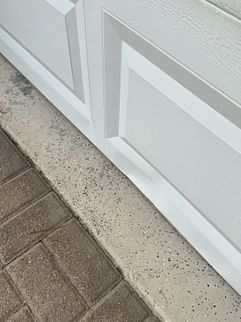


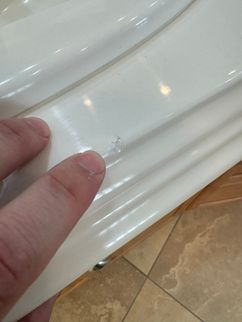
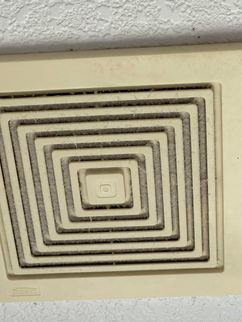

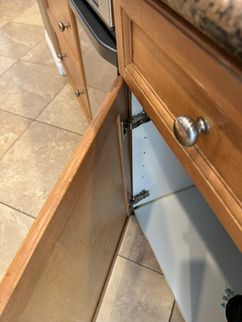





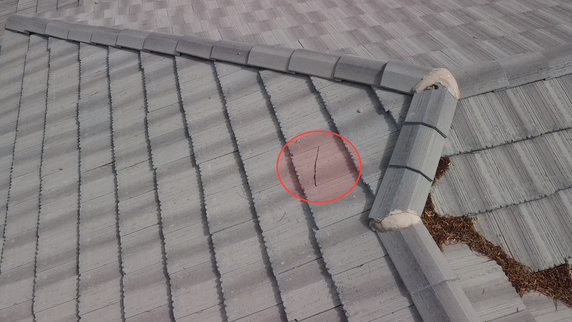










p20Diagram.png)
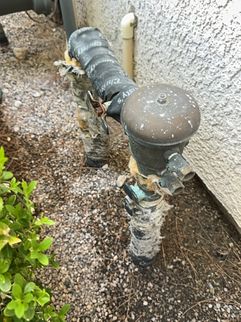








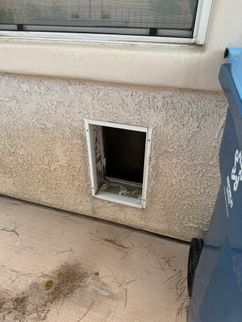
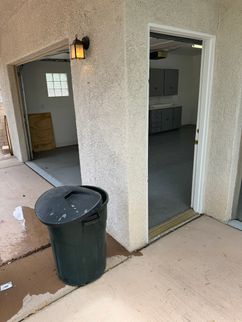










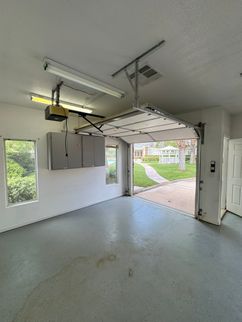


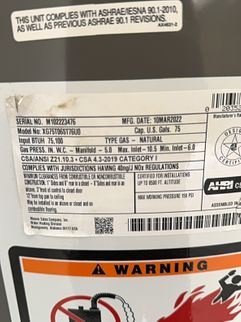
 (1) (1).jpg)

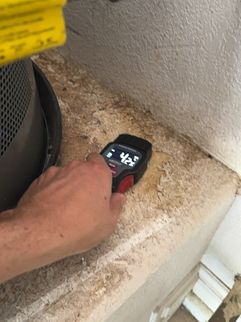





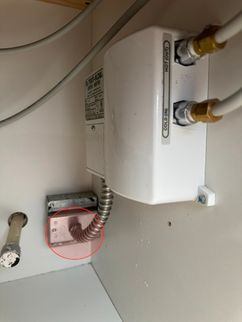

 (1).jpg)
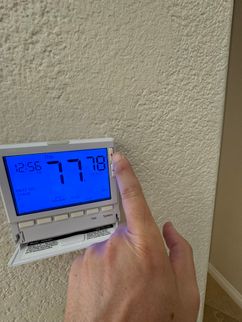

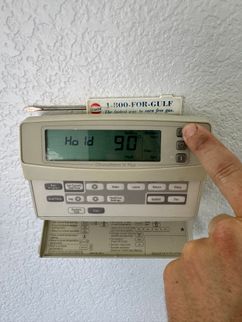





















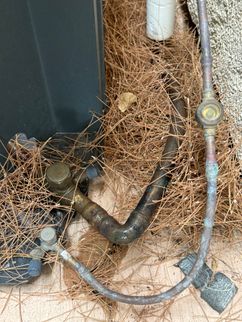
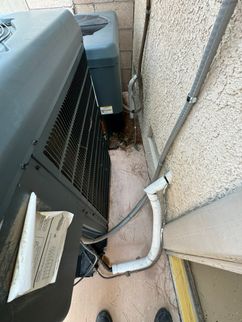









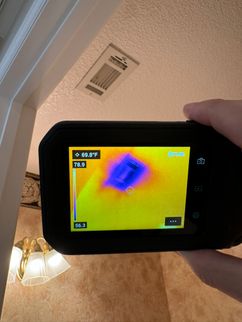






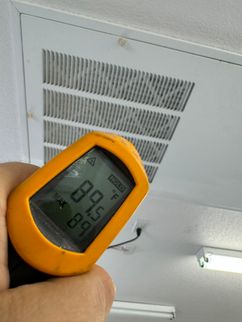

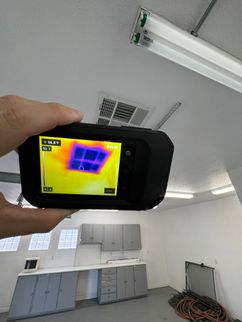





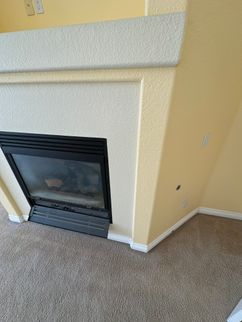








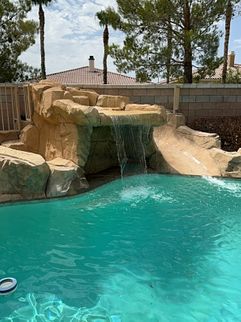



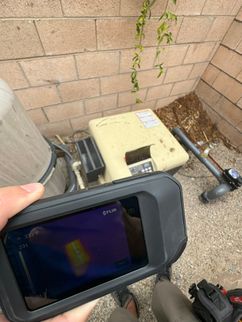
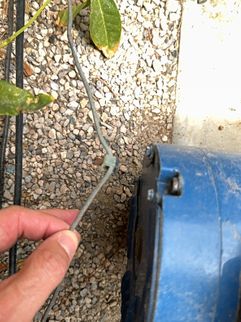
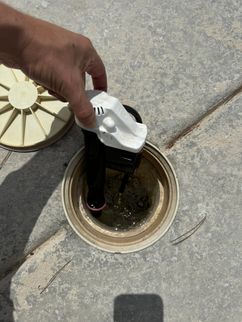








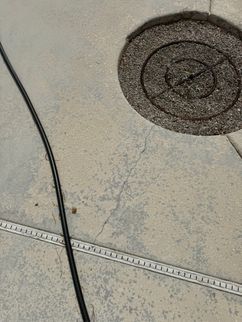












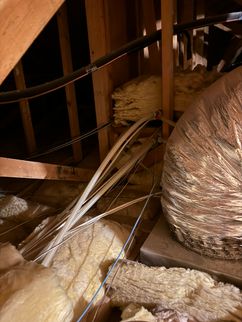










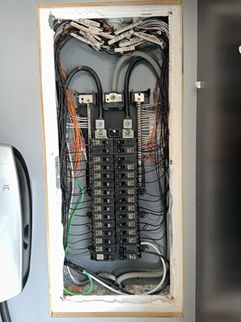

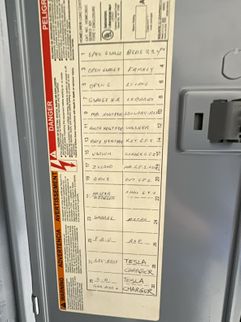












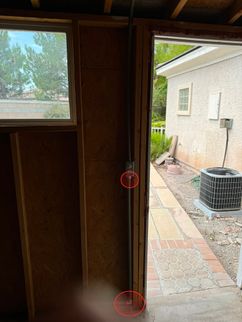




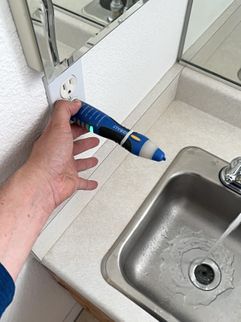
.png)

